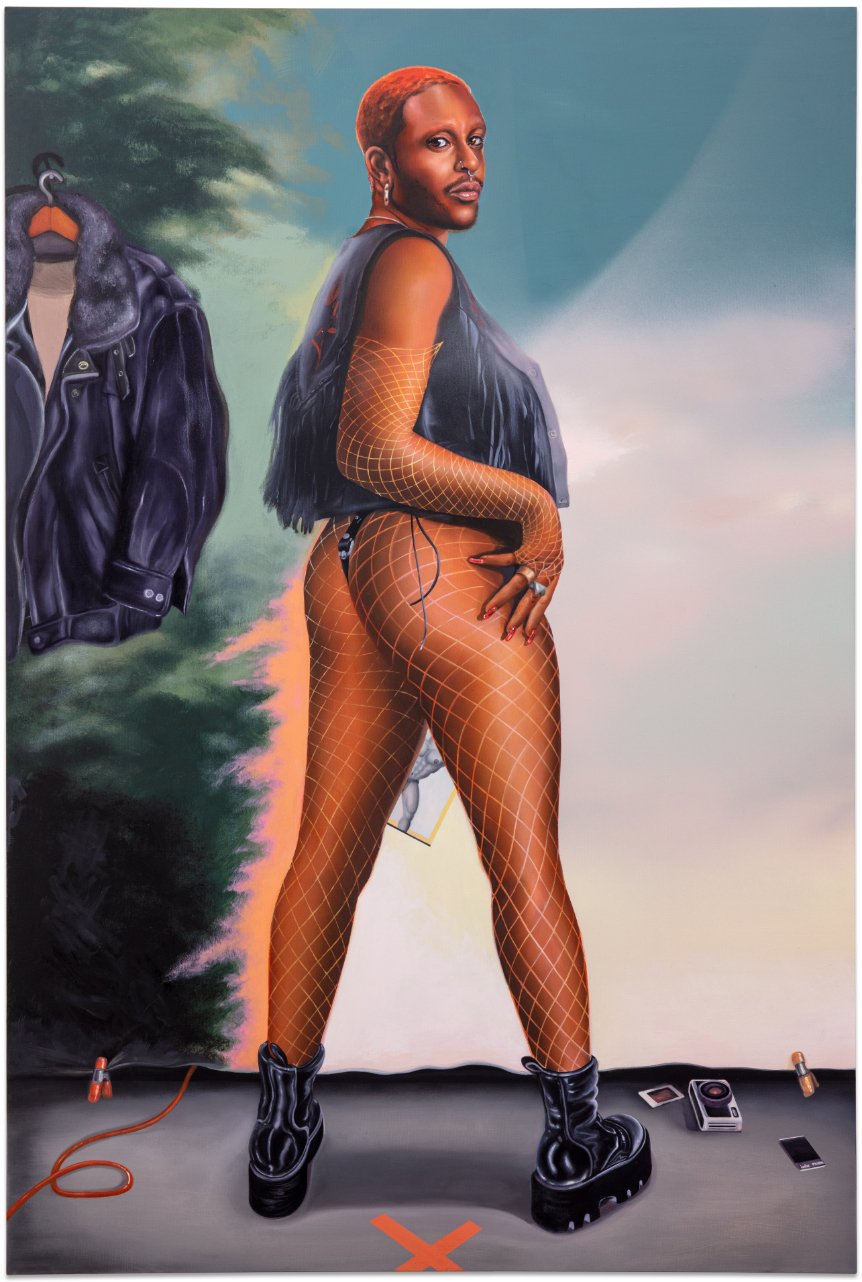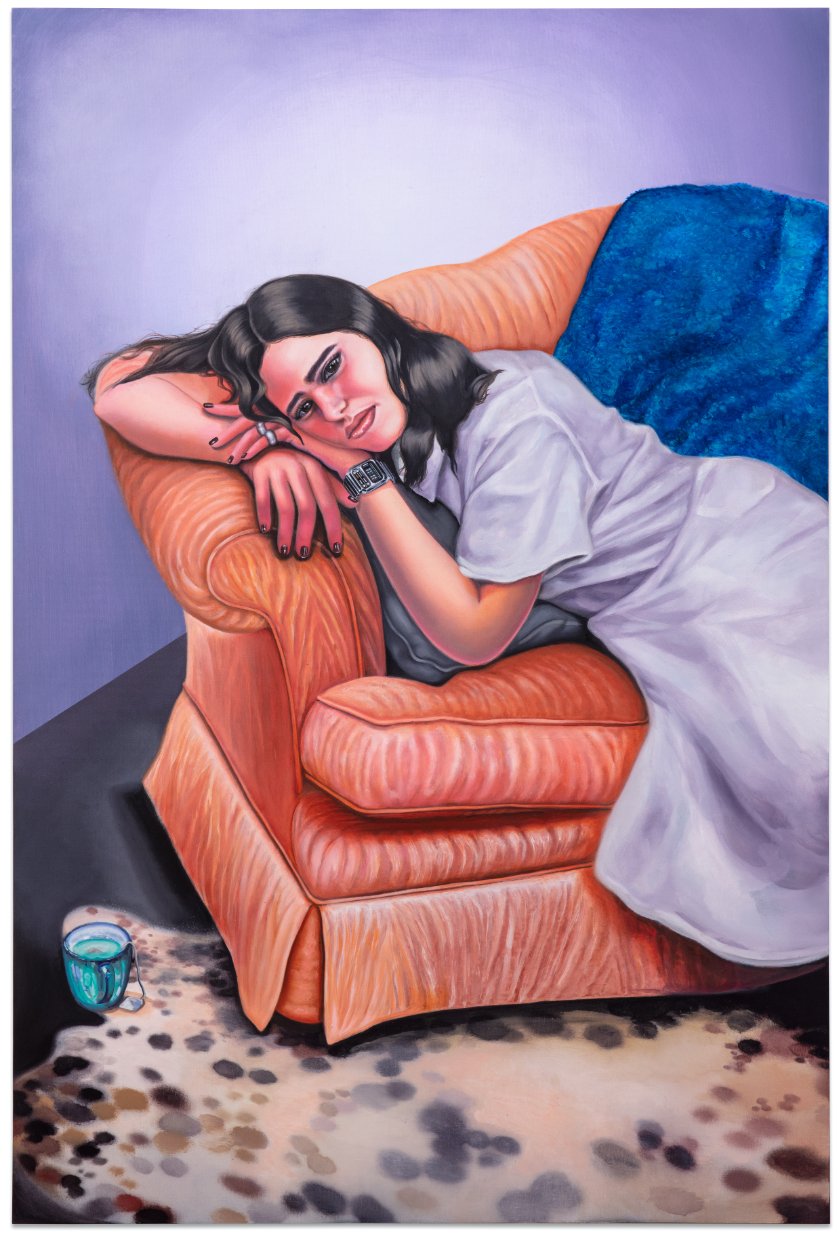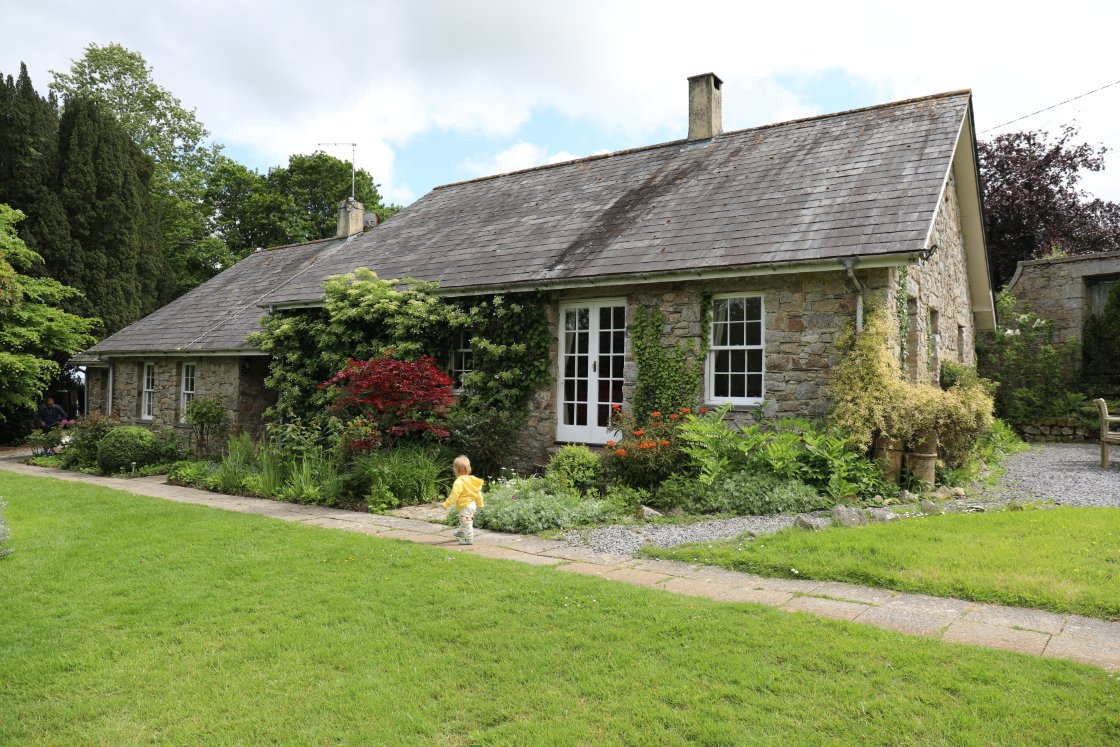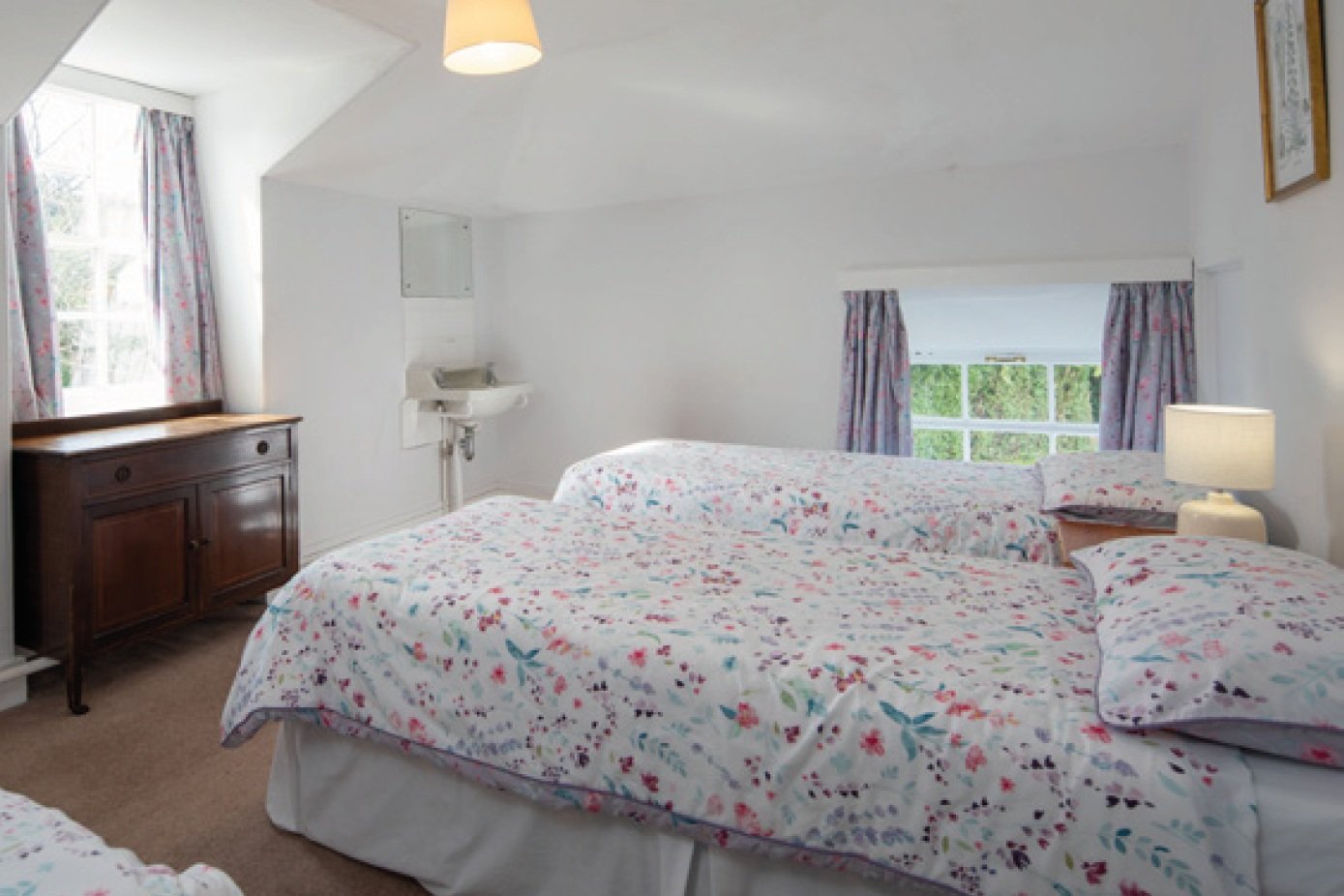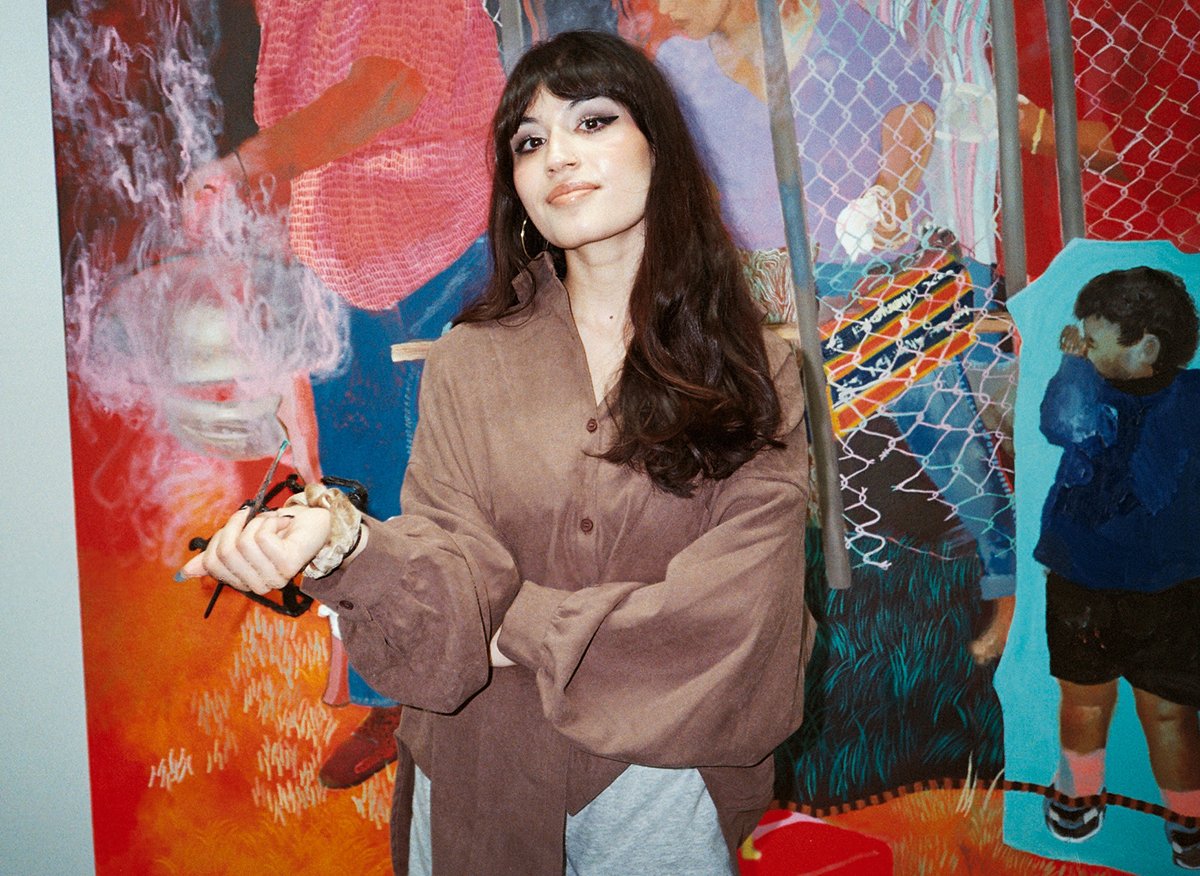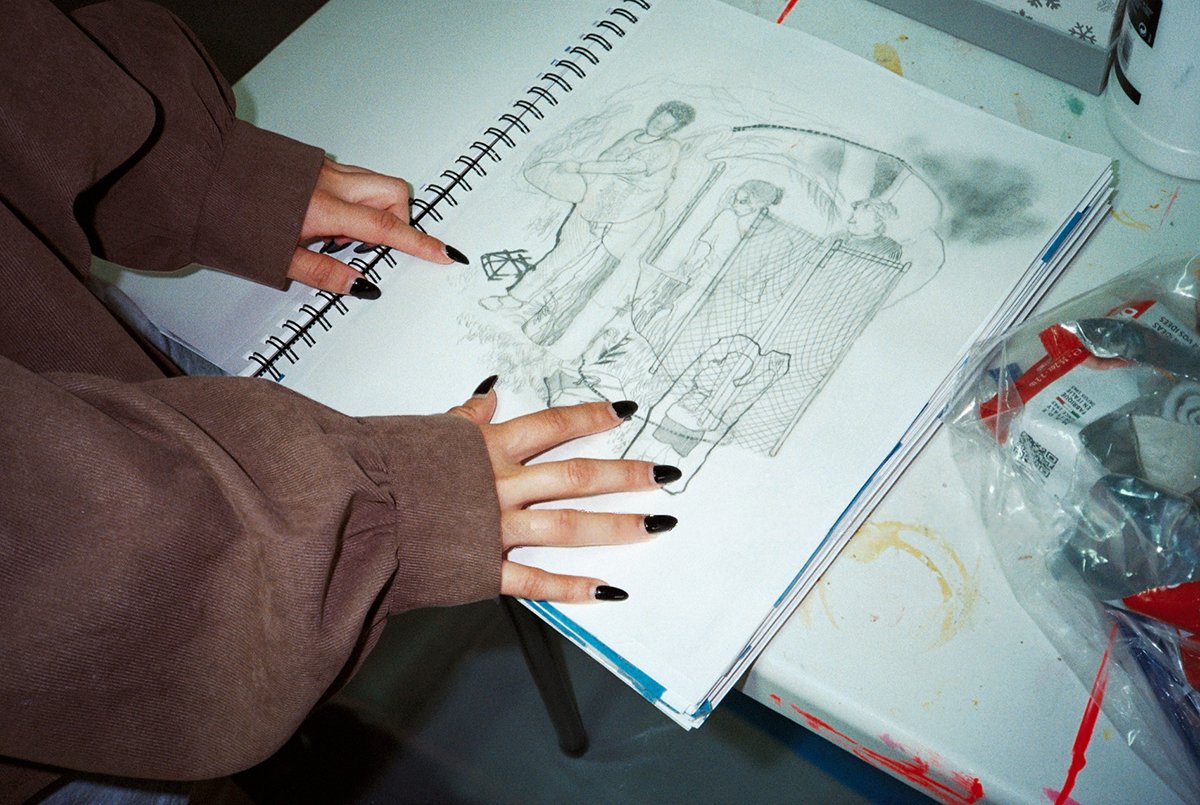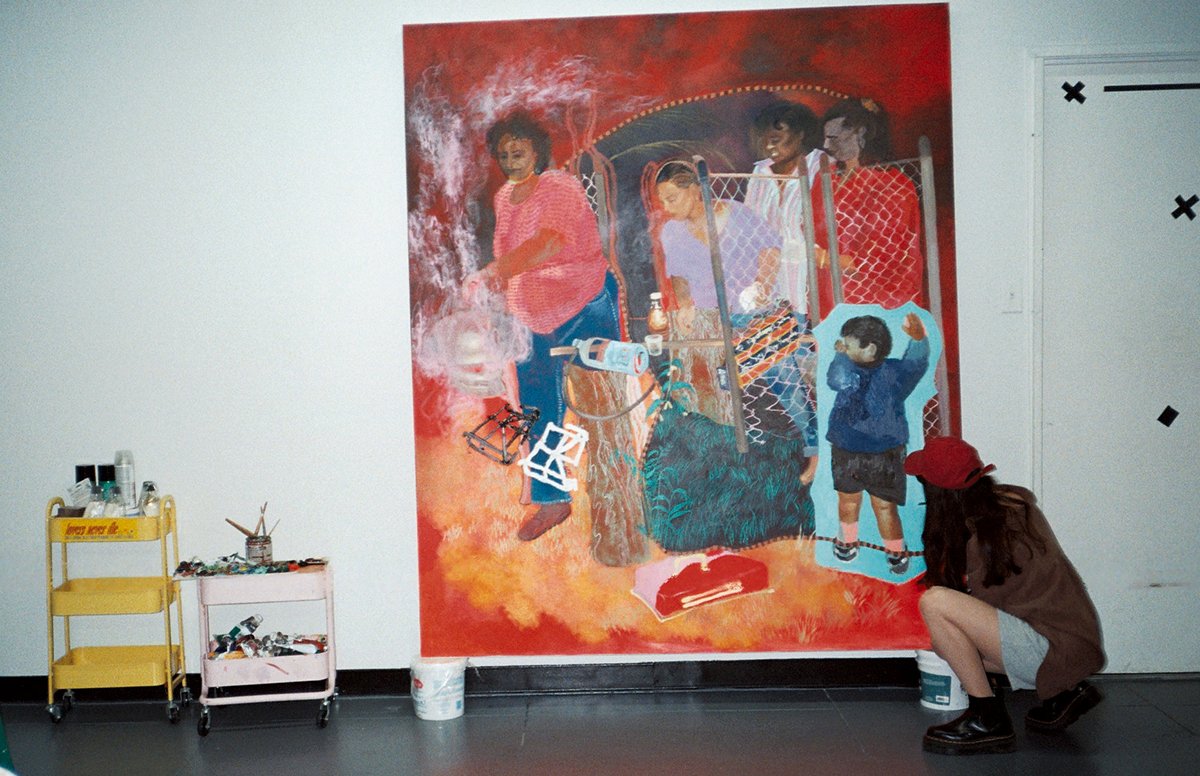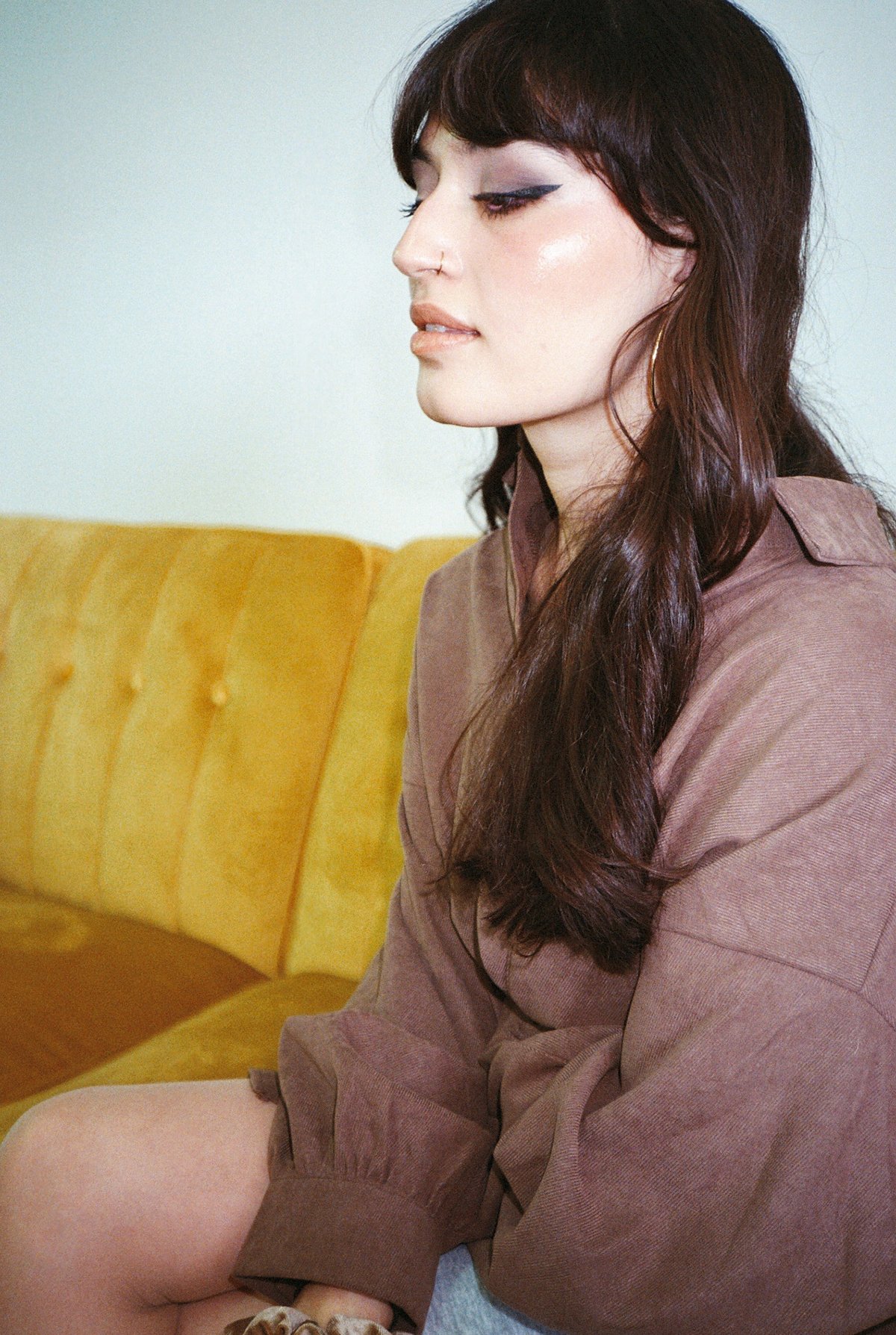photograph by Alexander Rotonodo
Nina Hartmann navigates a diverse array of artistic mediums, seamlessly weaving her connection to music into her creative endeavors. Her work serves as a bridge, melting the divide between mysticism and critical thought. Within her conceptual pursuits, one encounters a unique blend of archival imagery, elusive symbols, screen prints, and Xerox collages. It’s in these varied forms of media that the synergy between visual artistry and musical expression effortlessly unfold. Employing deliberate restraint, Hartmann eschews superfluous elaboration about her work. She entrusts the observer with discovering the magical quality which resides in the gap between the art and viewer. Hartmann treats the output of her mind as an algorithm; it becomes a framework for further artistic computation. Her work delves into the depths of the subconscious, revealing concepts characterized by their infinitude. Her perspective extends to the creatively unconventional, where she intriguingly regards conspiracy theories as societal relics worthy of study—an open-mindedness which enunciates her versatility as an artist. A fusion of the modern mythological emerges, as Hartmann recycles recurring themes that persist in our collective consciousness. Through her exploration of spiritual phenomena, she invites us to delve into the enigmatic, prompting us to seek understanding in realms beyond the real. On the occasion of Hartmann’s exhibition, Soft Power, at Silke Lindner in New York, Leo Cocar investigates the artist's signs and symbols.
Leo: Hi Nina! It’d be great to start this off with a bit of insight into your background. People who pay attention to your practice have probably picked-up that there's some sort of connection to music-oriented communities and subcultures. The Xeroxed imagery in particular calls to mind aesthetic histories tied to death metal and hardcore, among other genres, and some of the conceptual material you work with also alludes to these ties. I was doing some digging into your background, and Discogs brought up a collaboration you did with Drew McDowell from Coil.
Nina: I grew up going to punk, noise, and experimental music shows in South Florida. I actually learned how to make compositions by creating flyers and album art for my friends. I've played a bit of music, but it's never really been my main thing, so my way of collaborating has always been visually. A lot of my process has been influenced by subcultural music scenes, especially using recontextualized imagery through collage. Because I began creating compositions for flyers, it laid some groundwork for thinking about methods of disseminating information in general. Working with Drew was amazing. When he asked me to do his album art, it meant a lot to me because Coil was a big influence, especially some of their methodologies about ritualistic art making.
Leo: I can see the link, since for the most part, your world doesn’t really entail any drawing or drafting…it's mostly re-appropriated or quotational, the sculptural element of your practice.
Nina: Totally. I do paint in both the resin and encaustic pieces, but I wouldn’t say it’s the primary focus of my practice. My mom is a painter and her dad was a painter, both traditionally trained. I grew up surrounded by their work, as well as other art my mom exposed me to. I felt creatively inclined at an early age, but I remember being in art class, maybe in middle school, trying to paint a realistic landscape for an assignment and having so much trouble. I had this early psychic break about representation and got really frustrated by my inability to paint the way that was expected in school. I had to find my own way to make paintings without much of an adeptness to do so in a traditional way.
Leo: Would you say that the kind of background, the specific genres and scenes that you're working with, conceptually informed your current work? I feel like the folding in of esoterica and mysticism feels like part and parcel of the background you came from.
Nina: Yeah, absolutely. Honestly, I didn't realize how unsettling my work can be to some people until starting the MFA program. Going to grad school made me confront and question some of the underlying reasons why I work the way I do, and why darkness has always been such a natural language to me. It’s never really made sense to simply say, “I think this is bad,” when critiquing power structures and investigating the darker phenomenon of human existence. I wanted to explore ways to reveal some of the more complex and contradictory layers of this subject matter. I’m interested in finding ways to engage effect by opening up spaces in which the viewer can project contents from their own psyche onto a piece and assess their own biases and opinions…kind of like a Rorschach test.
Going back to the influence that punk and experimental music had on me, there’s a certain mode of critique learned in those spaces. It almost approaches the sublime. I think a lot about Reagan-era punk bands and how they would use photos of politicians or policemen on the covers of their albums. The simple recontextualization of the image creates a new critical function. There’s a unique experience that has to do with the body and the senses through the effect of imagery, as well as live shows.
Nina Hartmann
Networked Cross (Closing the Circle), 2023
Encaustic medium, inkjet print on wood panel
60 x 42 x 1 inches
Leo: It’s ironic that your work gets read as spooky. It feels like a recursion of 1980s Satanic Panic sort of thing where a lot of thematics or concepts that you engage with in your work aren't dark at all, but the mainstream understanding of these visual or aesthetic traditions are still closely linked with a clean-cut notion of evil. In reality, it's a lot like radical community-oriented politics and consciousness expansion, or just troubling the zeitgeist at large.
Nina: I agree. It makes sense to me to want to understand systems of power by exploring and deconstructing them in parts or specific events. We’re surrounded by these intentionally opaque systems that have existed since the beginning of time to control us. A big part of my research method is trying to acquire knowledge bit-by-bit to understand these systems, since it’s so daunting to take on such a large task.
Leo: On that note, could you speak a little bit more about modes of critique?
Nina: People often want a clear stance from me, politically or morally, and I think that withholding some of that is an important part of the work. It’s not a way to evade responsibility, I just think it can sometimes limit the work. The artist holds an inherent power by choosing to withhold and refuse.
I’m really interested in the body of work mimicking the systems that it’s exploring. I’ve been referencing a list of historical propaganda tactics when thinking about how the work functions as a whole and how I can subliminally harness them. Some of the ones I’ve been most interested in are repetition, allure, mysticism, redaction, suppression, and disinformation. Like how does a beautiful and seductive object affect your consideration of its legitimacy or authority? What about its composition, the quality of the photo, the colors, its level of obfuscation, and the quality of the object? The body of work starts to function as its own unique system.
Leo: I feel like ambiguity or withholding is generative within any artistic practice. No matter how direct or clear you make the message of your work, there'll always be some sort of gap between the author and viewer. Work can become more generative when you lean into the expansion of the gap between these two figures. In turn, this is why your work is so compelling—you leave a slight trail of meaning or recognizability for the viewer, just enough for something to latch onto without overdetermination. That's to say the magic or poetic quality of the artwork is in the gap, the ambiguity or the act of withholding.
Nina: It’s a delicate balance and a constant re-negotiation for a lot of artists. I like the idea of harnessing “the gap” as a tool. You want to supply enough information so the work can have meaning and people can access it, but also leave enough ambiguity so there’s room for subjective interpretation. There’s an element to the work where I take on the role of an unreliable narrator, maybe somewhat of a playful or trickster spirit. I used AI to alter a lot of the photos for this new work, either by colorizing black-and-white photos or generating new content. There’s a spirit of distrust that I’m interested in, where the work can move between truth and fiction, belief and fact, and it’s just an exploration of all these things.
I like to supply clues that act as breadcrumbs, often in the title or even as text within the paintings—it’s up to the viewer if they want to start their own line of research. I think the ambiguity creates room to take on larger themes. I’m always looking for ways that photographs can transform into contemporary iconography or symbols.
Nina Hartmann
Tools for Psychic Warfare, 2023
Resin, Acrylic, Pigment, Inkjet Print
22.5 x 26 x 3/4 inches
Leo: How important are the specific narratives, histories, and moments evoked by your work? I've always thought about your work in relationship to the unknown—this is particularly present with histories of conspiracy theories in the sense that their grip on the cultural or national psyche isn't necessarily about the particular qualities of a given conspiracy narrative, but rather that they gesture towards a vast, overwhelming, and ungraspable body of knowledge that is always inaccessible. In this way, the particular conspiracy theory acts as one of the few points of visibility in this subterranean network of intelligence. I think your interest in Jung often functions in the same way—you’re not necessarily interested in the particular qualities of a given archetype, but rather that they mark one of the few nodes of recognizability in the morass that is the structure of the human psyche.
Nina: It's trying to tap into these collective anxieties, fears, and desires that have existed in humans since the beginning of time and how they manifest in cultural phenomena or historical events. Conspiracy theories have been a great way of exploring these ideas for me because, even though they can be silly or outlandish at times, they come from a place of questioning and subversion, and also imagination. They’re very much the modern mythological. They’re almost always these recycled myths or reoccurring themes in society that have existed forever.
I’m also really drawn to the spirit of questioning and the role of the self-appointed detective. It is in part a result of a deep skepticism and mistrust, because so many people are tired of being lied to by politicians and such.
Leo: So, the use of—or interest in—Jungian psychology and conspiracy theories act as a tool to think about primordial anxieties or modes found in the human psychological condition? It’s something similar to fear or paranoia, but that might be a little blunt.
Nina: Absolutely. It's very much a manifestation of collective fears and anxieties that gain momentum. There's a reason that people, including myself, relate to them [conspiracy theories] and become so consumed. And a lot of people are grasping for personal power within a world where we’re manipulated by the misinformation we're given so often, and trying to reclaim the narrative.
We keep seeing this phenomenon of conspiracy theories proving to be true. We’ve seen it with all of these stranger-than-fiction moments that seem almost unbelievable until new declassified information becomes available. Things like MK-Ultra, Project Stargate, all of the UFO hearings happening right now. Our realities can collapse at any moment, and these events serve as a kind of memento mori of reality—they remind us that everything we're taught is a potential farce. It speaks to the fragility of accepted knowledge, and all of the problems with documented history. All recorded history is layered with subjectivity and biases, and our understanding of scientific knowledge or “facts” is constantly changing and evolving.
Leo: The use of conspiracy theories have a weirdly sublime quality to them. Individual narratives such as that of the mentalist Uri Geller, whose purported psychic abilities eventually lead to a CIA collaboration. There's a sublimity to conspiracy theories that gestures towards this huge, overwhelming network of information that's unstable, but also withheld all the time. It’s kind of like the rhizome network underneath the mushroom’s fruiting body.
Nina: There are these little bits of outlandish information that can provoke a reevaluation of our accepted knowledge. I did a show at this gallery Gern en Regalia in 2020, where I worked almost exclusively from the Project Stargate archive in the Freedom of Information Act, which, if people don't know, is this project where the CIA tried to harness peoples’ psychic abilities to spy on Russia using remote viewing, kind of like astral projection. I very much view the moments of knowledge acquisition I had while gathering research as a form of mind expansion. My practice began through researching subject matter I'm just interested in, honestly.
Nina Hartmann
Chaos Map (Balance Diagram), 2023
Encaustic medium, inkjet print, pigment on wood panel
64 x 59.5 x 1 inches
Leo: Which is kind of funny because, in a way, your work has this funny dialectic where there’s an act of withholding and then the histories that you're drawing from hinge on revelation or disclosure. These secret operations or conspiracy theories you draw upon, despite gesturing towards the unknown, almost require the act of disclosure. I mean, if Project Stargate was never disclosed, its relationship to the vast corpus of state secrets and the unknown would obviously be invisible. In a sense, without disclosure, conspiracy theories and the like would be, well, nothing.
Nina: I think the way the work functions is constantly changing, as well as my desires and intentions. There will always be contradictions because the world is contradictory in nature. There’s a logic involved in the work’s creation, but there’s also a sort of non-logic that exists. I think this also speaks to my interest in mysticism and spirituality. It’s an exploration of the way that belief exists through a subjective logic, where rules can be broken at any time. People sometimes ask me if the work is a case study or something, maybe because I'm interested in critical theory, and cite inspiration from post-structuralist and sociology texts, but this work is not meant to be anthropological. It's partially about my own experience researching in these spaces. The way my own mental health fluctuates through the process is layered in the work.
Leo: You’ve talked about the relationship between the citational or re-appropriated imagery used in your practice and its relationship to your music background. What about some of the current techniques you use? Namely, the suspension of imagery in encaustic or resin and the recurring motif of marking your works with shapes evocative of divine geometry.
Nina: The resin pieces were largely inspired by DIY plaques or memorials on the walls of dive bars. I grew up in Miami and going to bars is a big part of the culture there. There’s this restaurant called Flanigan’s that is covered wall-to-wall with photos of people proudly holding their caught fish, and there’s this one photo of a “square grouper”, which is slang for a big brick of discarded marijuana found floating in the ocean. I think about that photo a lot [laughs]. When people cut out newspaper articles about bar regulars or employees and seal them into a cut-out piece of wood with table-top resin—I really like these moments of forging personal histories and creating objects to commemorate events that aren’t usually given space, but are important to that particular place. I became interested in how the characteristics of those forms give them importance, their shape or composition, which evoke other monument-like objects. Also the gesture of encapsulating and preserving something in resin, and how the desire to protect it against weathering gives it a quality of recorded history.
I’m drawn to materials with an alchemical quality to them. Materials like encaustic and resin that activate the work like a potion. The heat, the mixing, the chemical interaction—it all ties into my interests of esoteric knowledge and alchemy as well.
Leo: Could you also talk a little bit about how and where you source your imagery?
Nina: I gathered a lot of these images from leaflets, pamphlets, and press packets that different sectors of the US military and government released as gestures of transparency, usually as a response to controversial events. One of the main ones I sourced from was a book that the Air Force released that basically tried to disprove the 1940’s UFO sightings in Roswell. The book contains a collection of photographs documenting tests that involved throwing human sized dummies out of planes to test balloon technology, thereby offering an explanation for the alleged sightings. The way in which these booklets attempt to control and orchestrate the narrative really struck me, especially how they rely on the photograph as indisputable proof. I was also working with these Department of Energy Packets that were released in response to the environmental and health damage caused by nuclear testing done during the Manhattan Project. It’s funny, it feels so topical because of Oppenheimer.
Leo: In the new series of work being shown at Silke Lindner, there's a fairly generic image of a lamb in one of your works. Correct me if I’m wrong—I’m guessing this image isn’t from a secret government operation. So, how do you choose your imagery?, because there seems to be a mix of images directly relating to the histories engaged by any given number of your works as well as seemingly unrelated images.
Nina: That's a really good question. I'm interested in the juxtaposition of various source materials and how they interact with each other in their recontextualization. For instance, having images from an official CIA archive existing on the same wall as images from a more subterranean source, like page 57 of a conspiracy theory message board about the pope’s ties to the satanic church. The scrambling breaks down the hierarchies of information, giving it a new rhizomatic manifestation. I want to deconstruct the ways we assign legitimacy to content based on its characteristics and the context, or lack thereof, that it's delivered in. The lack of context breaks the image down into a more symbolic function.
Leo: Your work also possesses a flickering quality, which I think has to do with an engagement with temporality. For example, in the 20th century Air Force book you just talked about, photography was used as a way of assigning objectivity or truth to a given event. But now, it's come full circle: no imagery is trusted in our post-truth era. This isn’t only due to the advancement of photo editing software, but also AI capabilities. It’s almost as if the possibility of the camera or image being objective has entirely gone out the window.
Nina: Photography’s function as evidence or data feels so topical right now with all that’s happening with the advancement of artificial intelligence. A big conceptual inspiration for the show was the idea of the operational image, which Harun Farocki talks about in Phantom Images. Basically, it’s an image that exists for a function, like a still from a drone camera containing GPS coordinates and a crosshair, or a sonogram image. The concept sparked a line of inquiry for me about images that hold authority through their technological characteristics and qualities. Operational images contain some sort of objective truth value because of their function of measurement and task. I tried to employ some of the compositional characteristics commonly recognized in these images to make paintings.
Leo: These images are legitimized not through their ability to reproduce a view of the world as it's seen by the human eye, but through their ability to penetrate this form of vision, which is then further legitimized by their role within a larger operation of knowledge accruement. I think this is formally mirrored in your work in the way your sculptures are reminiscent of cosmograms, of charts and diagrams that show the world as it is beyond the pale of the mundane. Your practice seems to almost fall into the category of a research-based practice—just without the designer-furniture-and-text installation format.
Nina: Yeah, you know one of my professors said to me during a crit that my work is trying to do what Hans Haacke does but in the opposite way, and I kind of loved that.
Leo: I think it's a huge compliment to be honest. It’s a conversation I’ve had with several people but the problem with a lot of these practices (not Haacke’s, obviously) is that I’m not about to spend sixteen hours reading in a gallery.
Nina: I have this vast archive of documents and images, but I always try to find a way to synthesize them into more digestible forms and engage the senses in an exciting way, because at the end of the day we live in a super fast-paced world with a short attention span, and I also want that to be part of the work. Kind of mimicking the ways images become iconographic in social media, which we’ve all gotten used to. As I mentioned, allure or seduction through material is a part of the work. People always come up to me and are like, “I want to lick the resin”.
Leo: So why the recurring turn to specifically military-centric special operations and conspiracy theories?
Nina: My dad's father and his three brothers were all in the US Army or Navy during World War II. My grandfather was a Pearl Harbor survivor and a decorated Navy captain. On the contrary, my father was successful in dodging the Vietnam draft multiple times. They tried to draft him, I think, three times. He learned this yoga technique from his friend which involved clenching his sphincter muscle for extended periods of time to heighten his blood pressure. His blood pressure was so high every time he would go in for his draft physical the doctors were like, this makes no sense, you’re in perfect health but your blood pressure is through the roof. Once, they sent him to the hospital to be monitored for 72 hours because they assumed he was on drugs. But it worked every time! Anyways I can’t find any information about this technique on the internet, but I love the story. Maybe these two facts can speak to some of the poetics of my inclination.
Leo: [laughs] I think this family history of where yogic practice and warfare meet feels appropriate for contextualizing your work. Can you talk a little bit more about the role of psychology in your practice? We’ve talked about how Carl Jung’s ideas have been influential for you and even in this conversation you’ve mentioned fear, anxiety, and paranoia.
Nina: I’ve mentioned this to you before, but I have my own issues with mild paranoia in my personal life. Or maybe it isn't really paranoia, just a result of all the things I've experienced. I suffer from OCD and it feeds a lot of my compulsions to collect and organize, but I don't view the main mode of the work as being biographic or anything. I mentioned before that I do try to pick up on universal frequencies through letting go of control and creating methods or constraints for the collection process. Sometimes I rely on algorithms to reveal the next subject, like a form of divination. For this new work, I tried to treat my brain like a processor of information in order to create some of the shapes. On some days, I would take in curated information for several hours, and then have a drawing and collage session afterwards. For instance, I might look at early alchemical diagrams, a collection of fractal geometries, and early panopticon architecture to an exhaustive point, and then try to create something while in a disassociate state after I’ve subconsciously absorbed the content. It’s somewhat like a form of automatic drawing. It’s a way of letting go, as well as attempting to tap into the power of the subconscious.
Leo: Is this a consistent way of working in your practice or is this something you developed or turned towards in your new show with Silke Lindner?
Nina: In some ways, it just became more fine-tuned and intentional recently.
Leo: I think your interest in both diagrams and psychology makes a lot of sense. I’m thinking now of Lacan’s graph of desire, and the attempt to visualize in the simplest form a titanic, ungraspable force in the world. In the context of psychoanalysis, clinical case studies—with their lived human experiences and specificities—are really the only way of thinking about such overwhelming forces, like desire. You can’t picture desire as a whole but you can think of it through small points of visibility, like with the subject talking through a traumatic event at the clinic. I think your images and work operate in much of the same way.
Nina: Yeah, it’s like trying to grasp and organize little moments within an infinite network that feels impossible to see or understand as a whole, but there are instances of understanding found in these little moments of revelation. At the end of the day, it’s an exercise in reality manipulation.
Soft Power will be on view at Silke Lindner until October 7th.

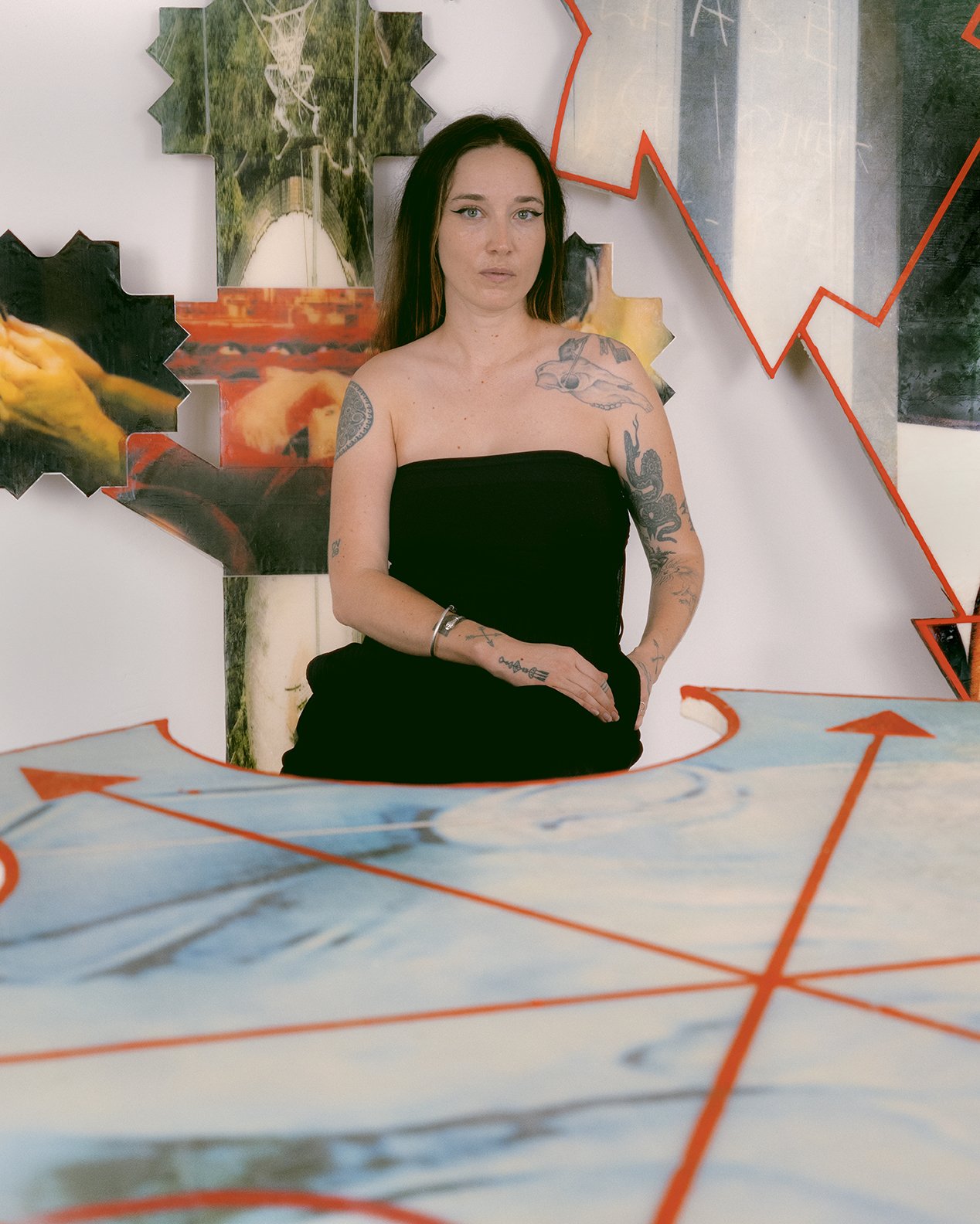
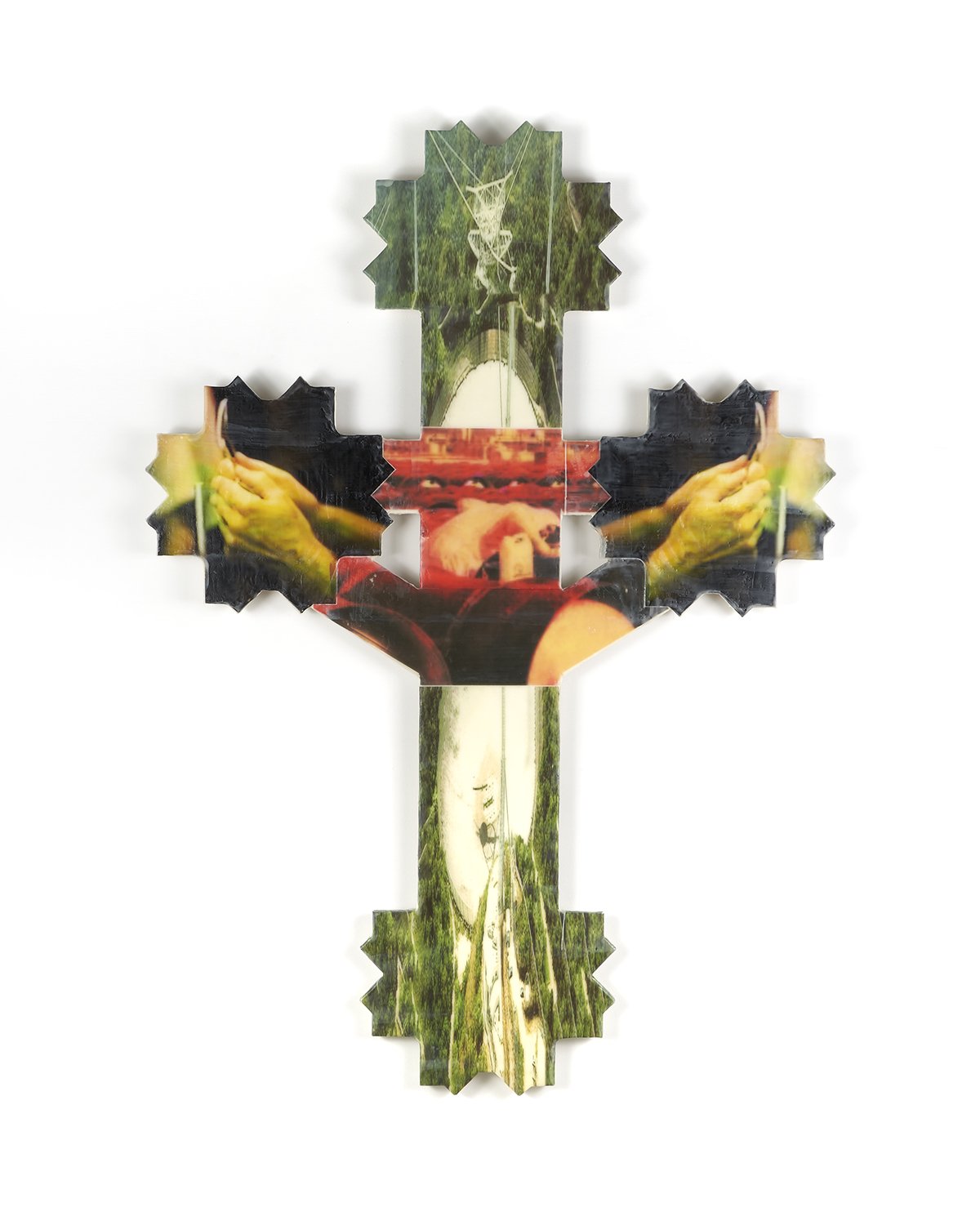
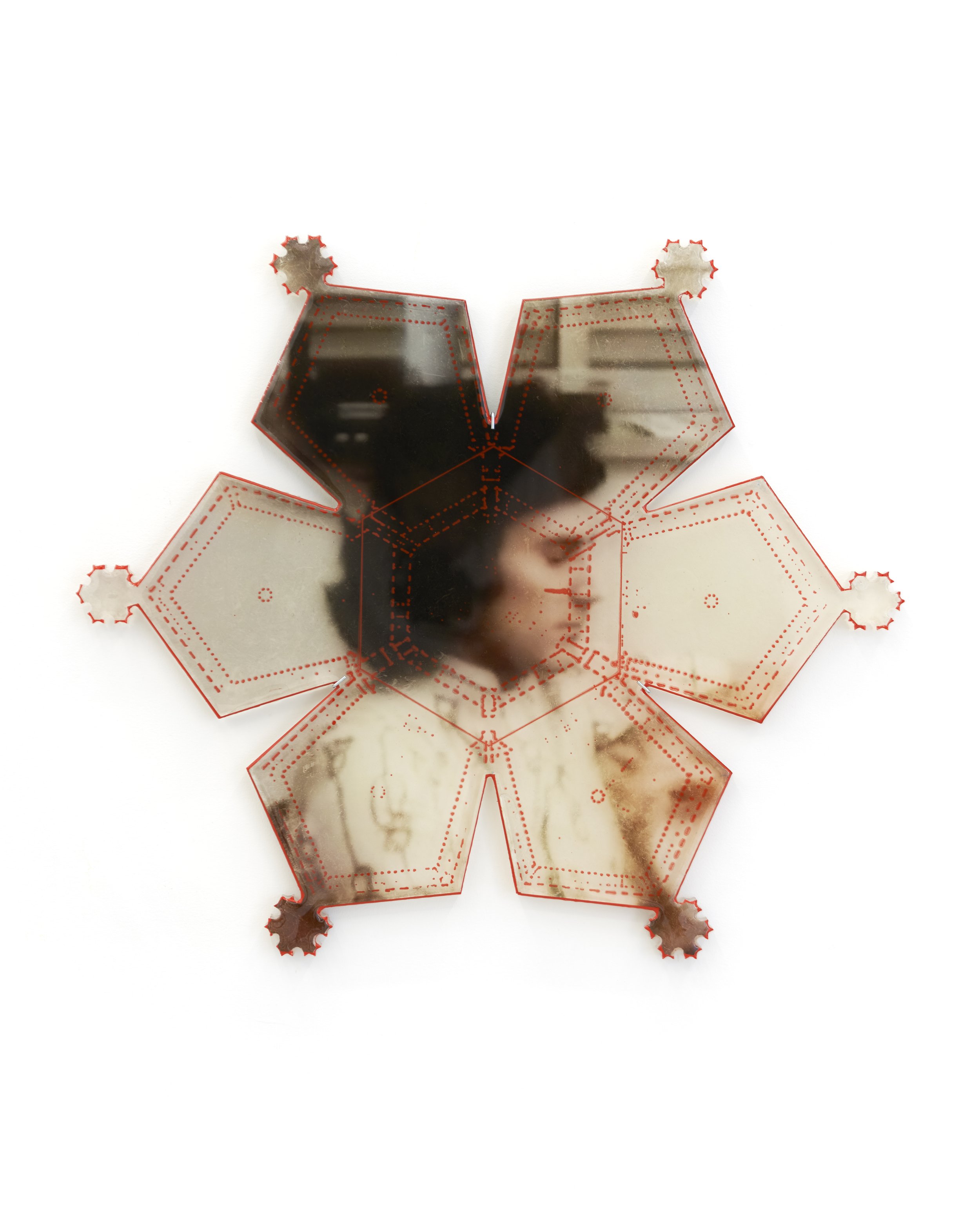

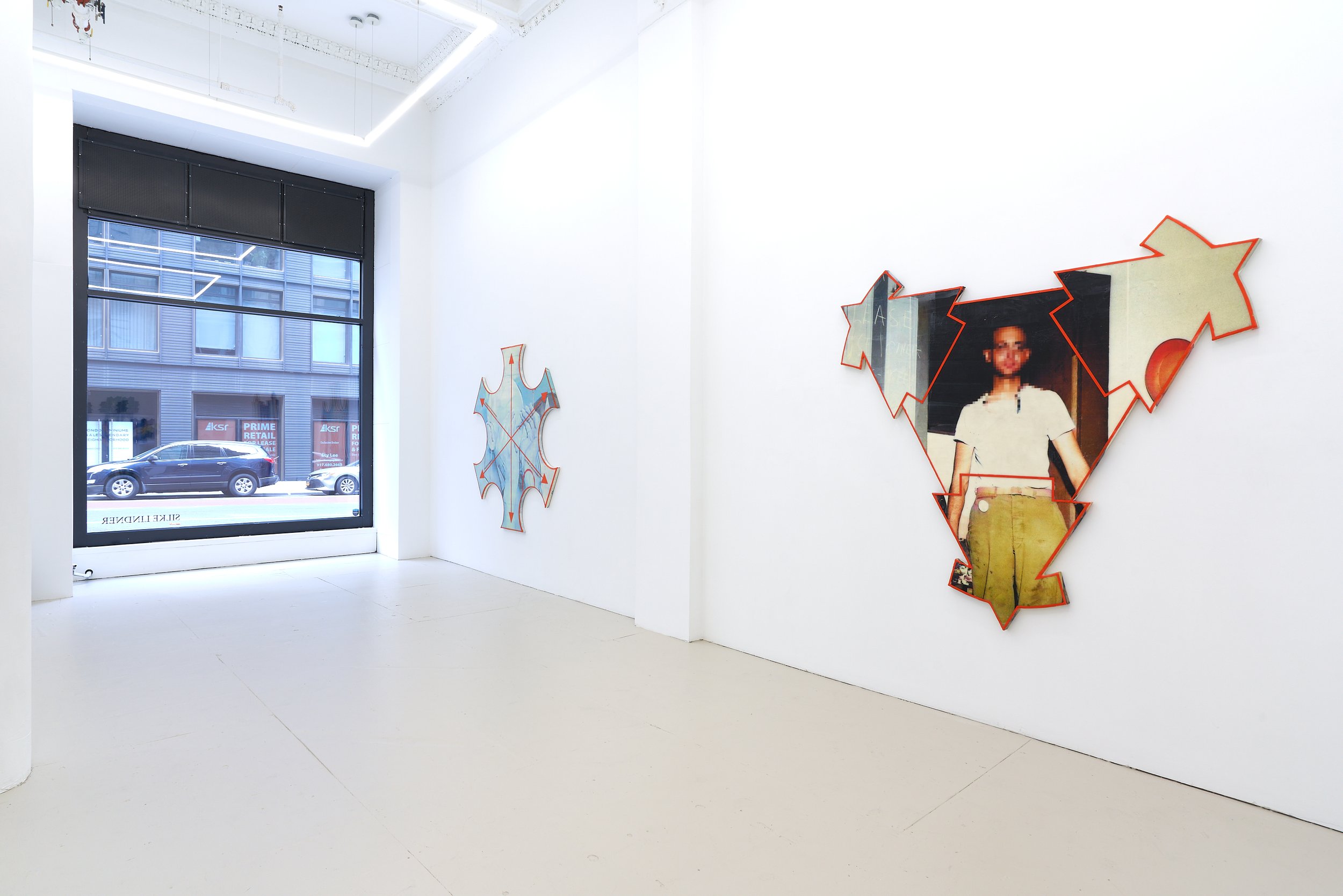
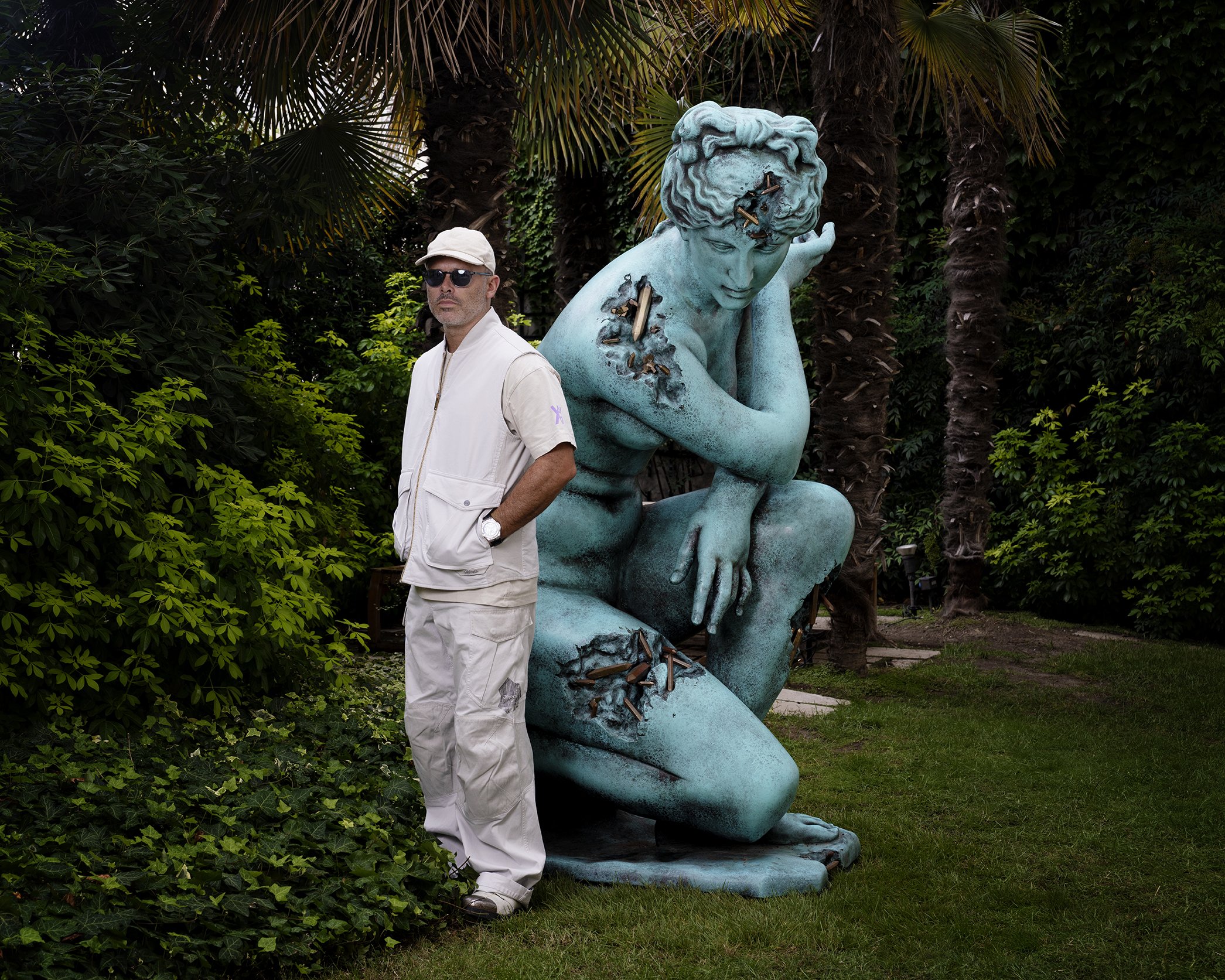
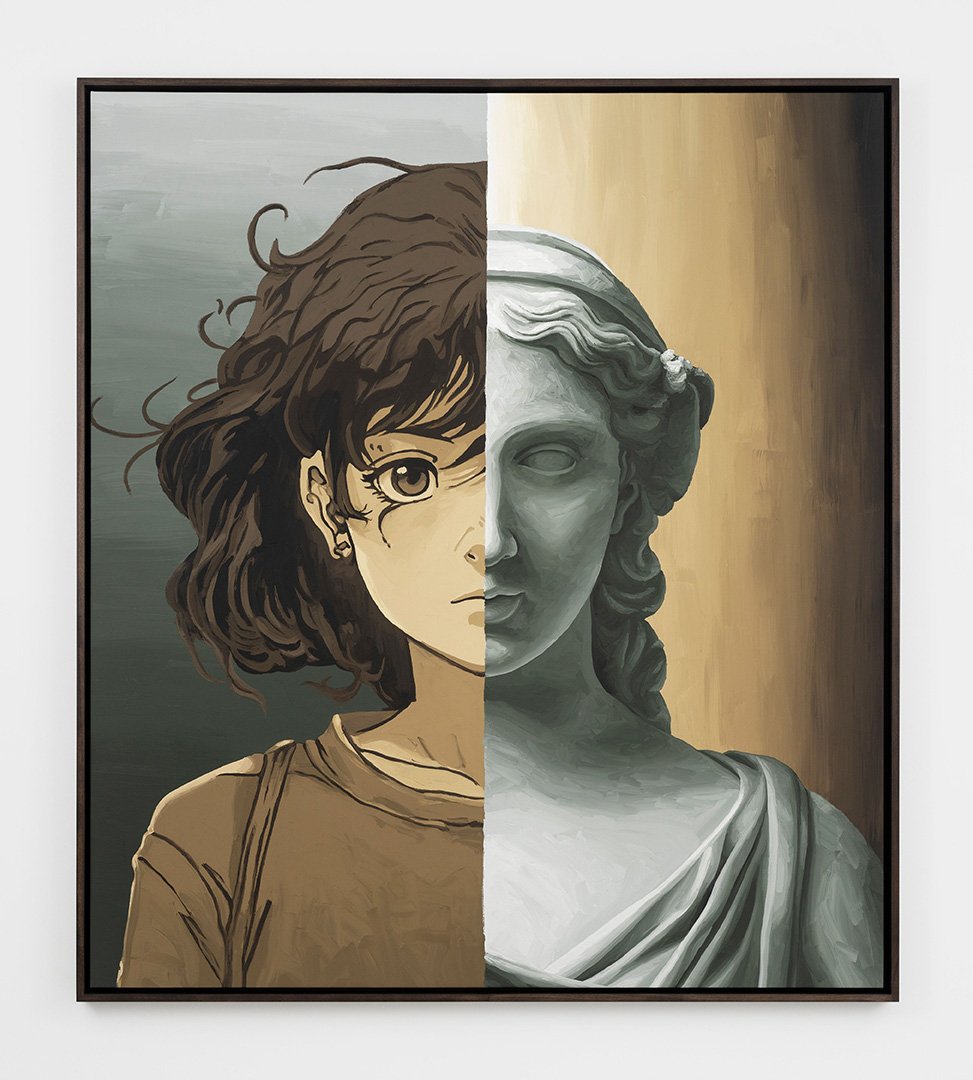
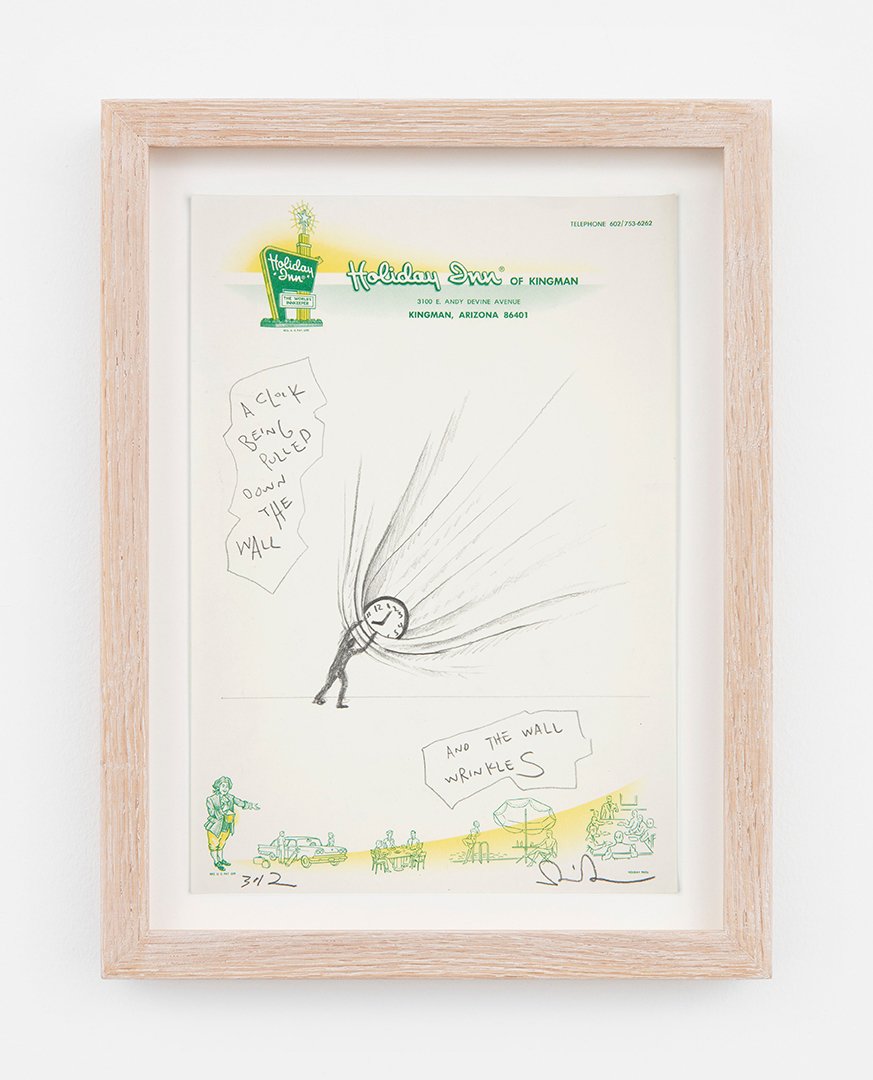
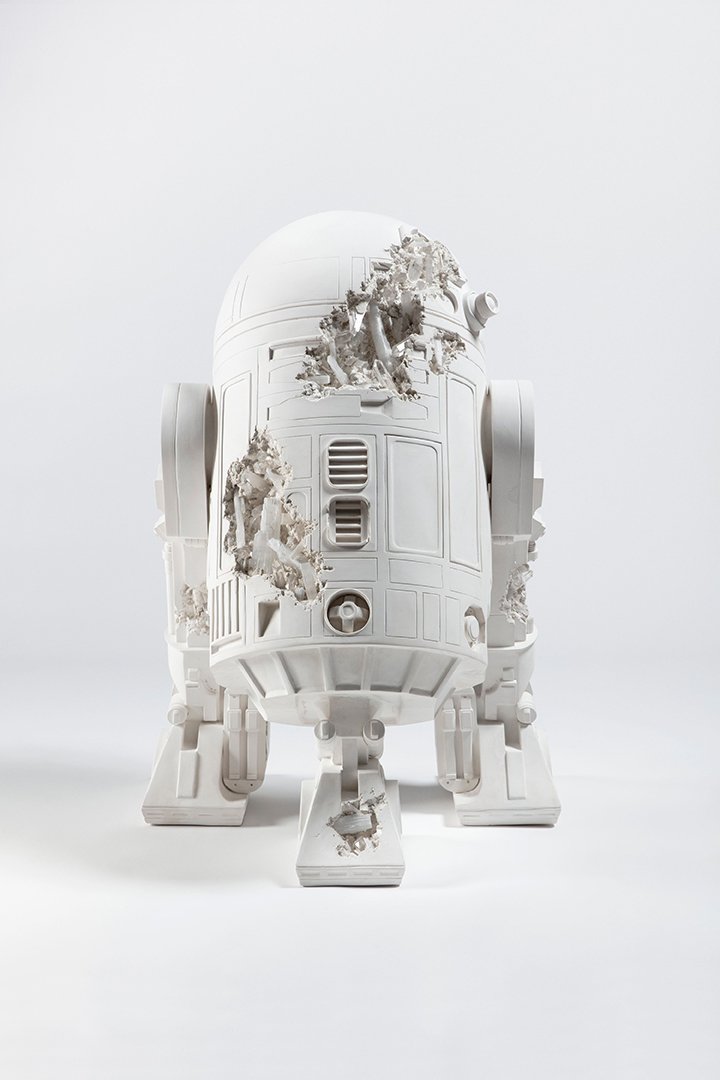
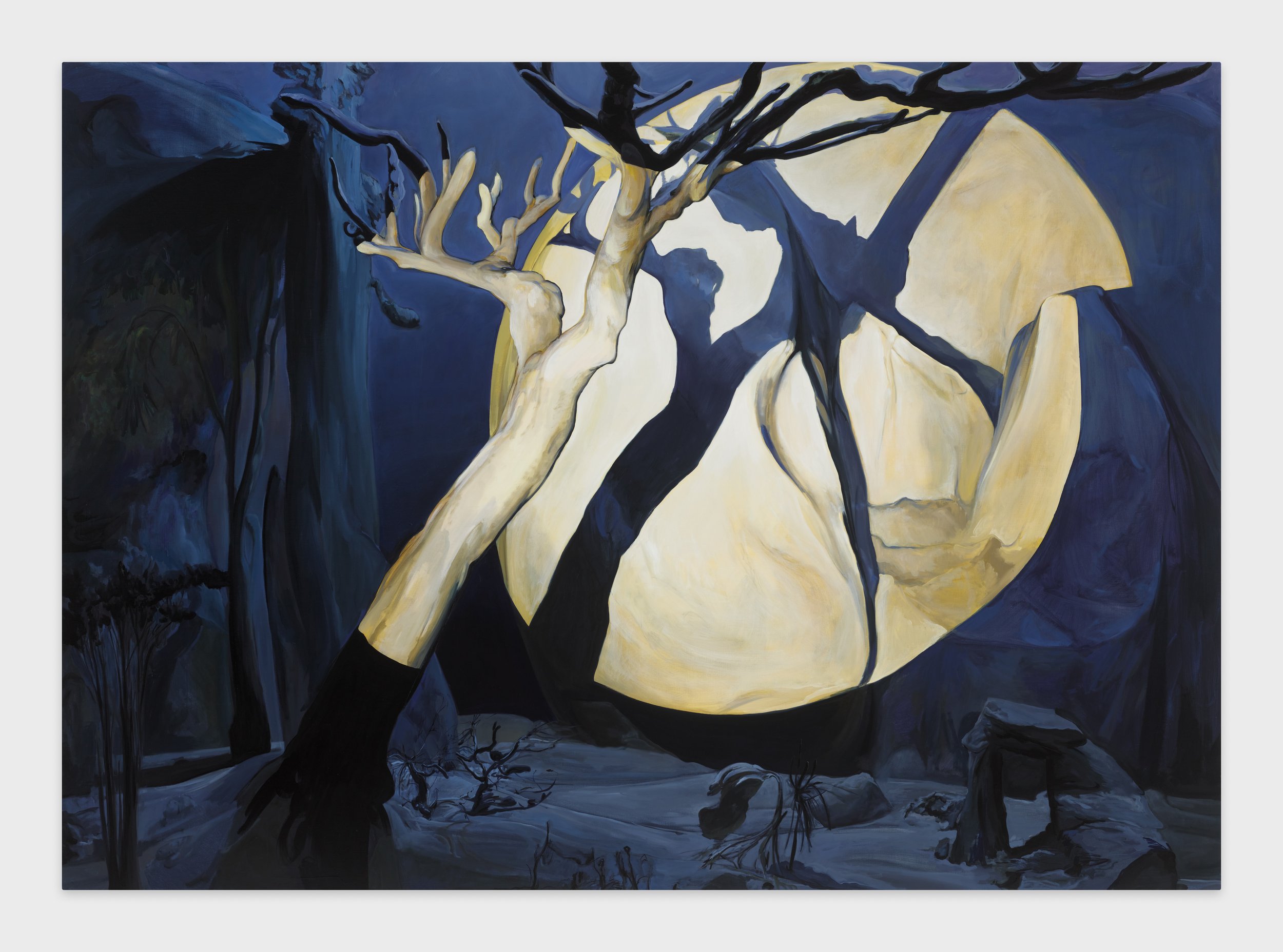
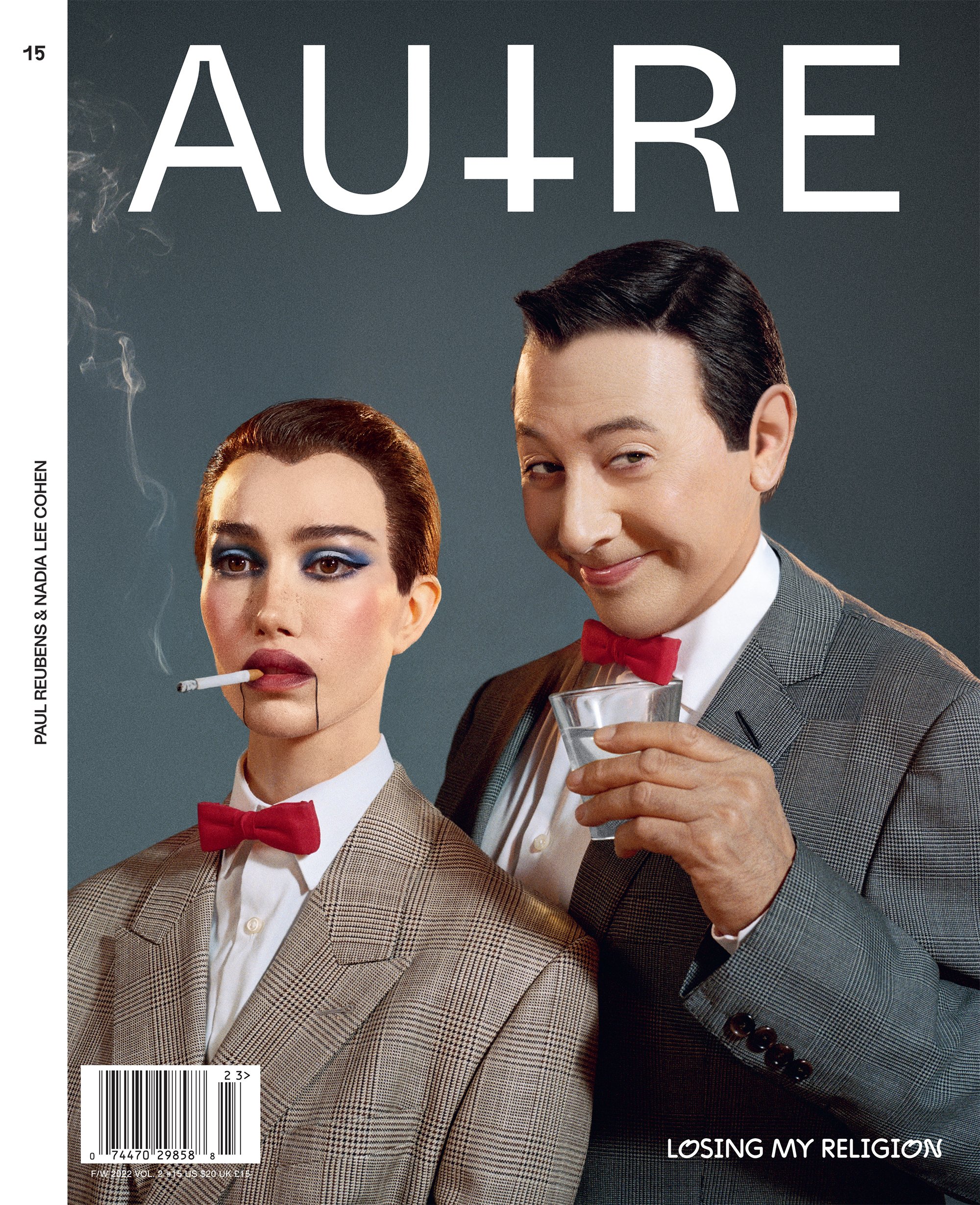

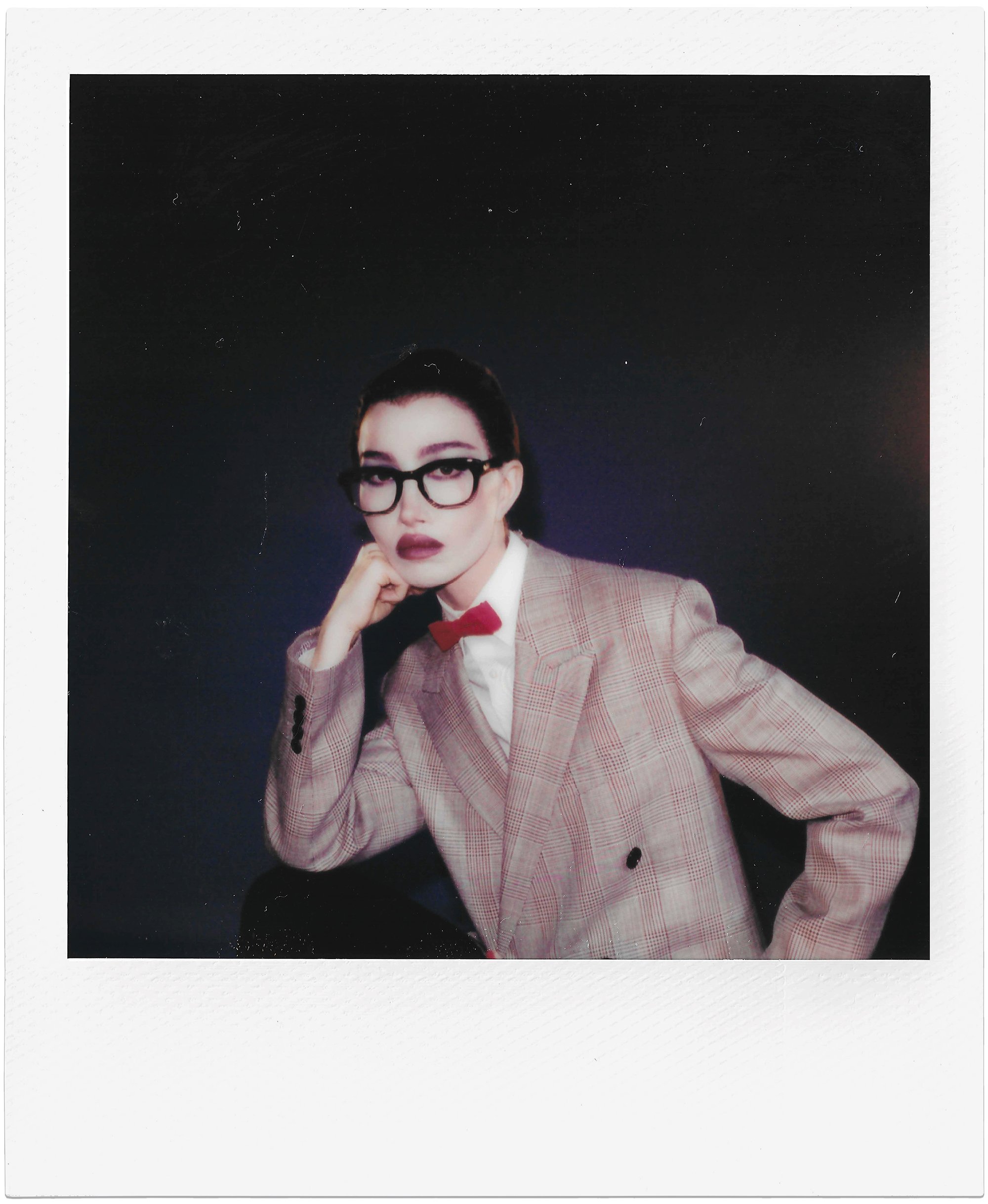







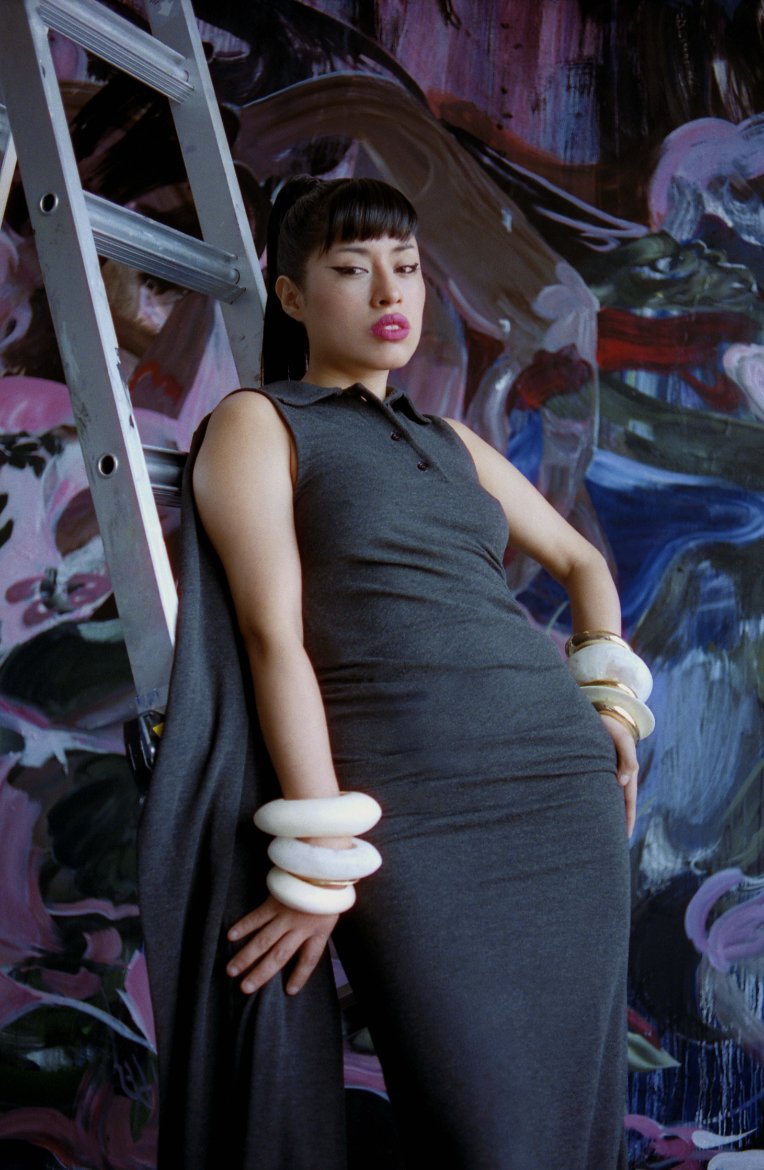
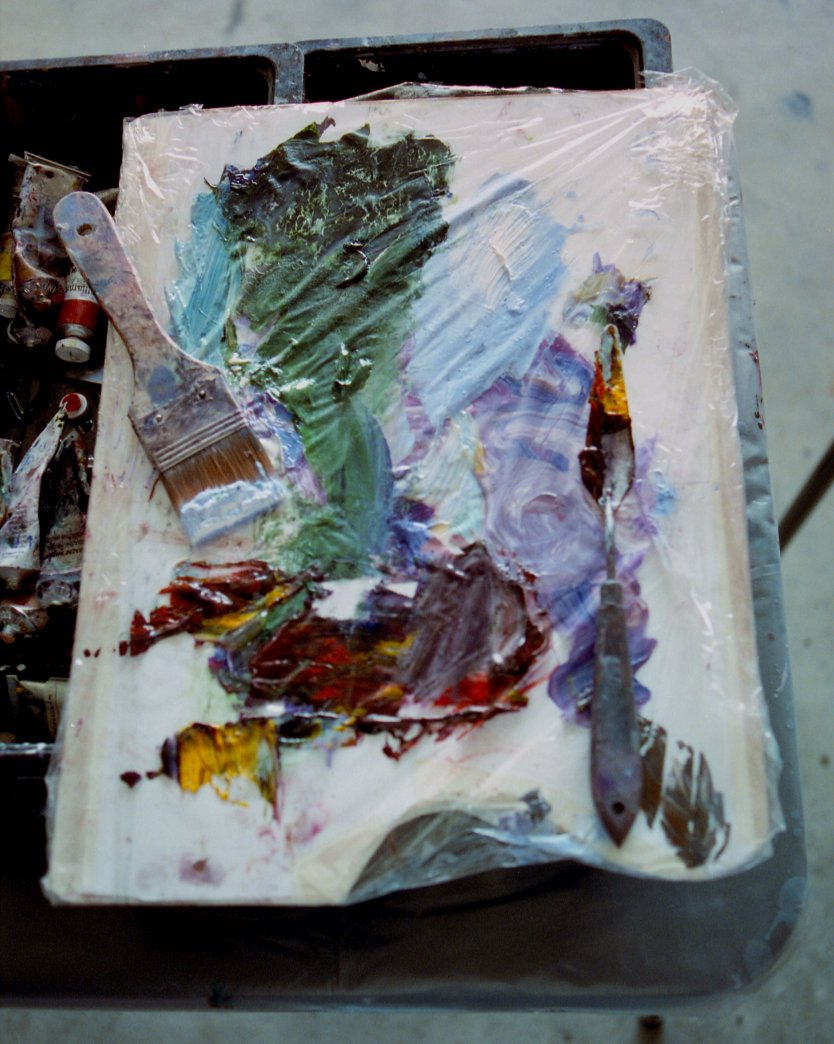

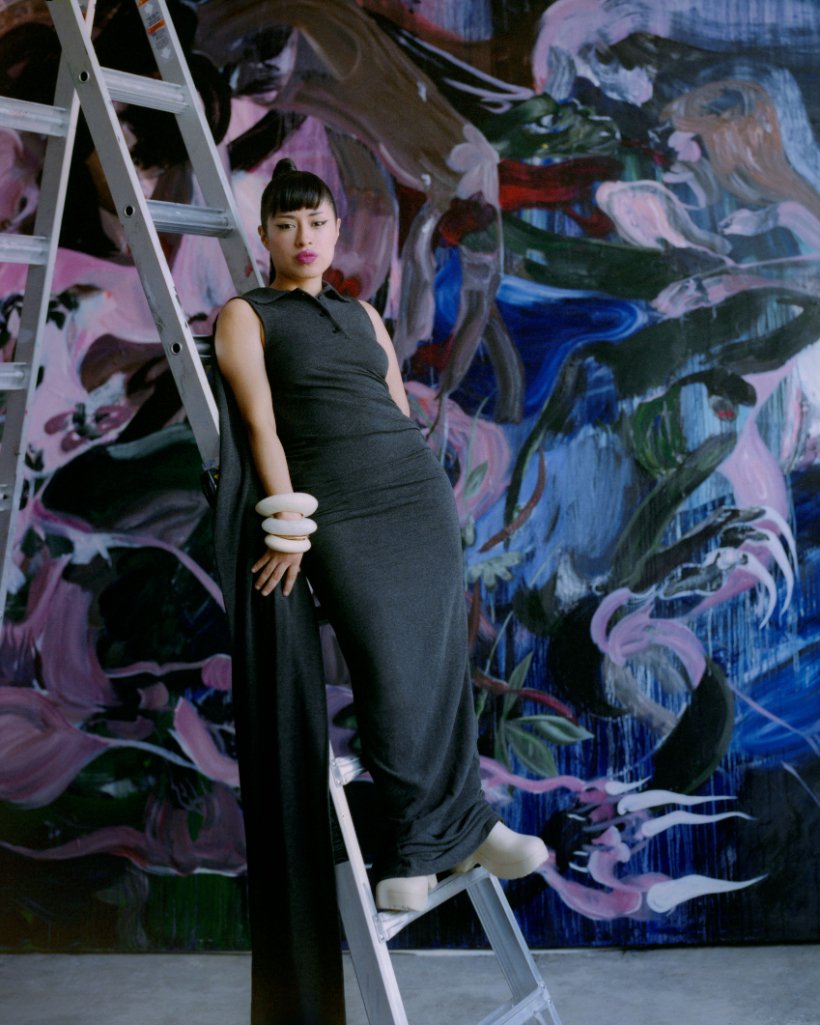
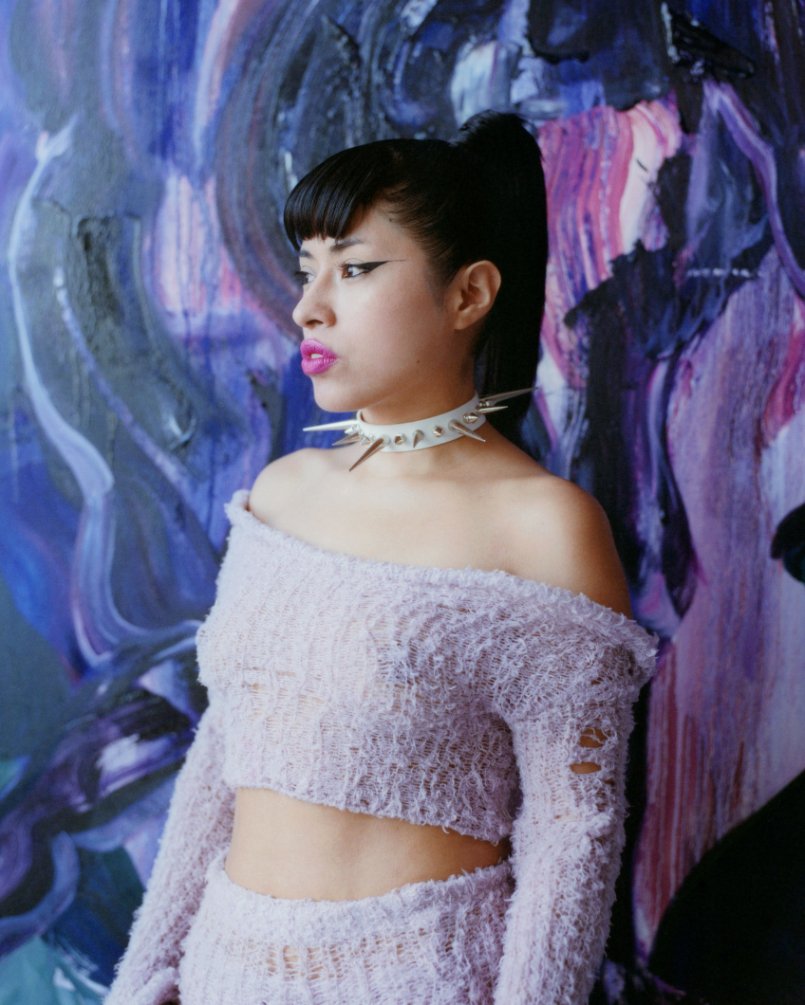

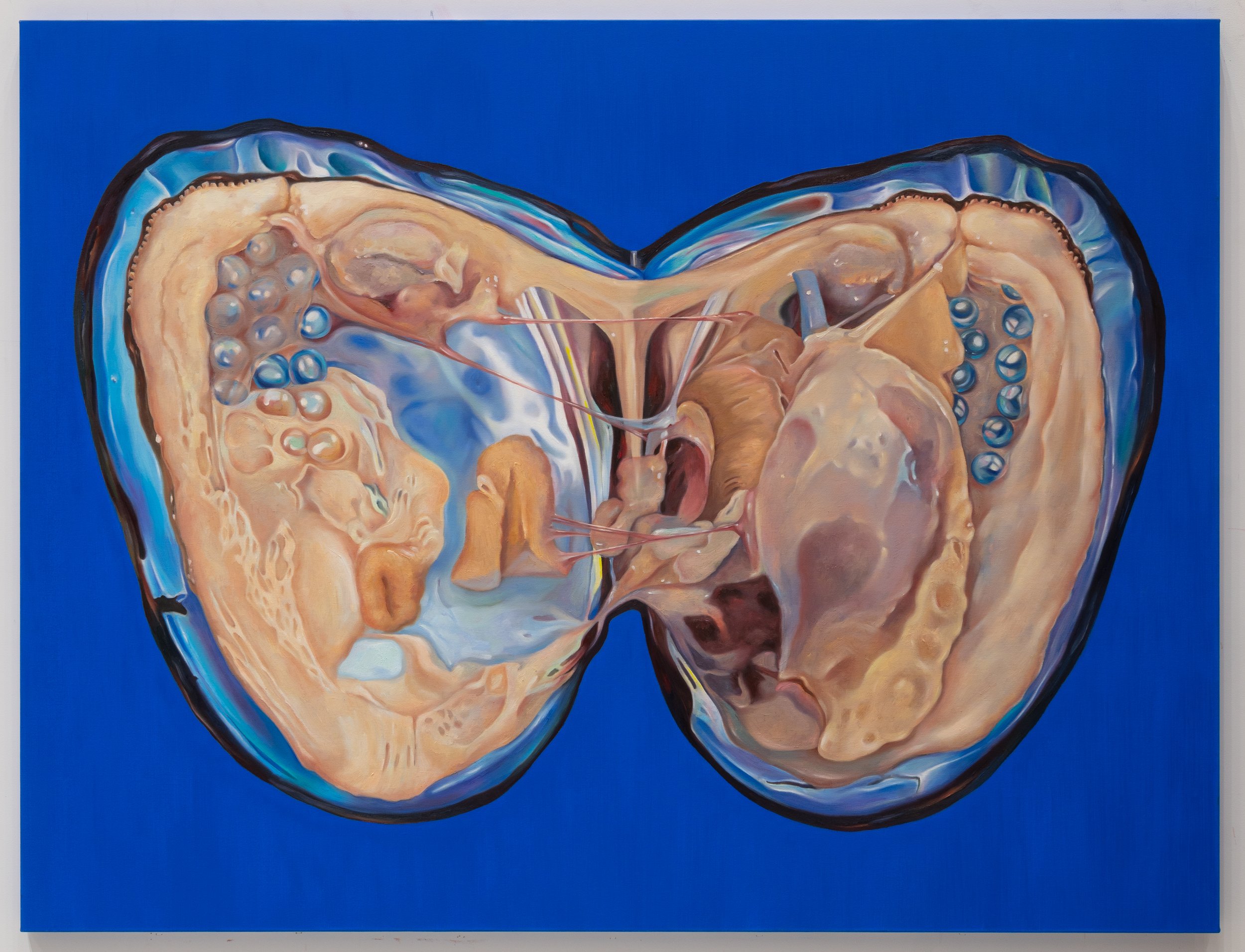
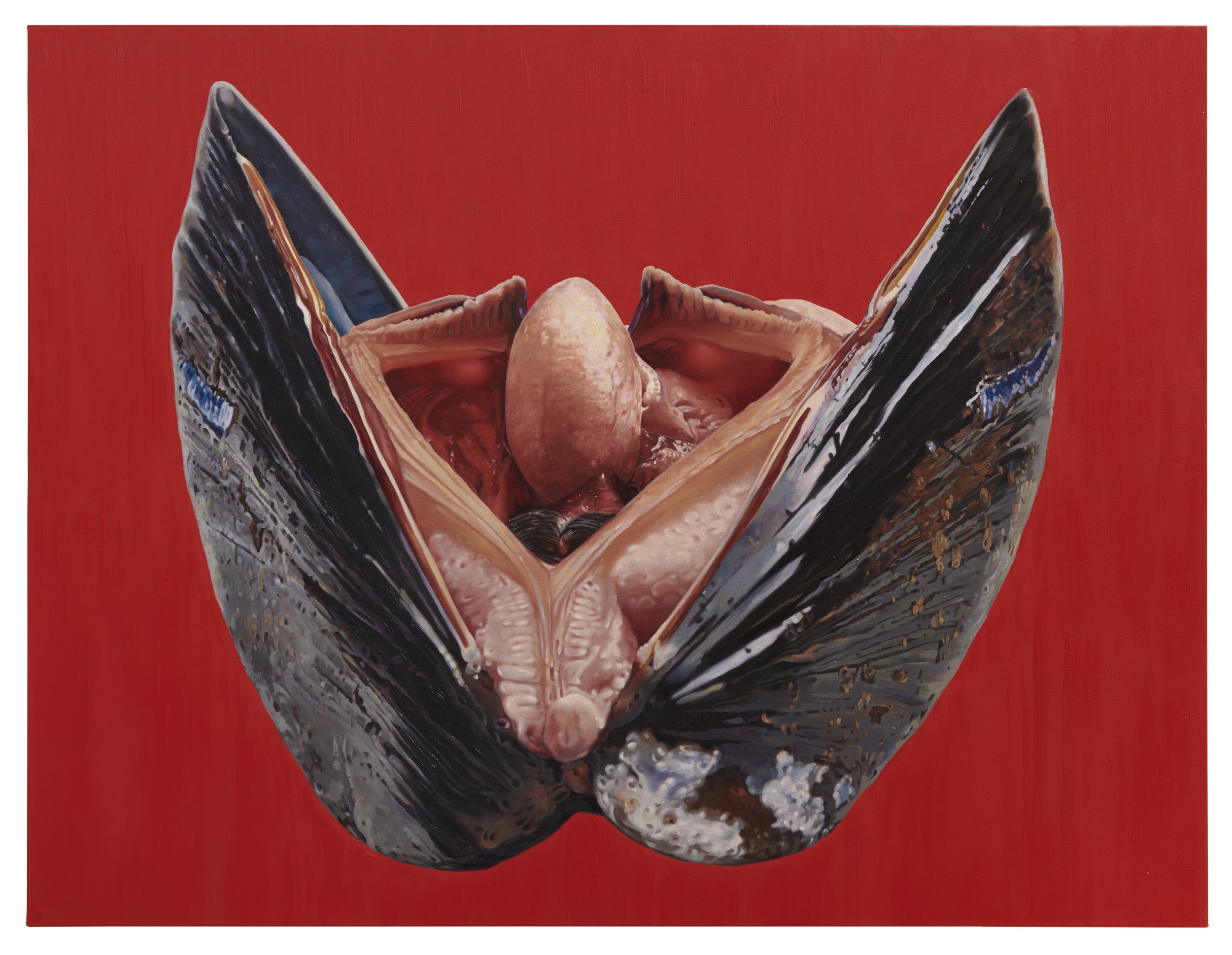


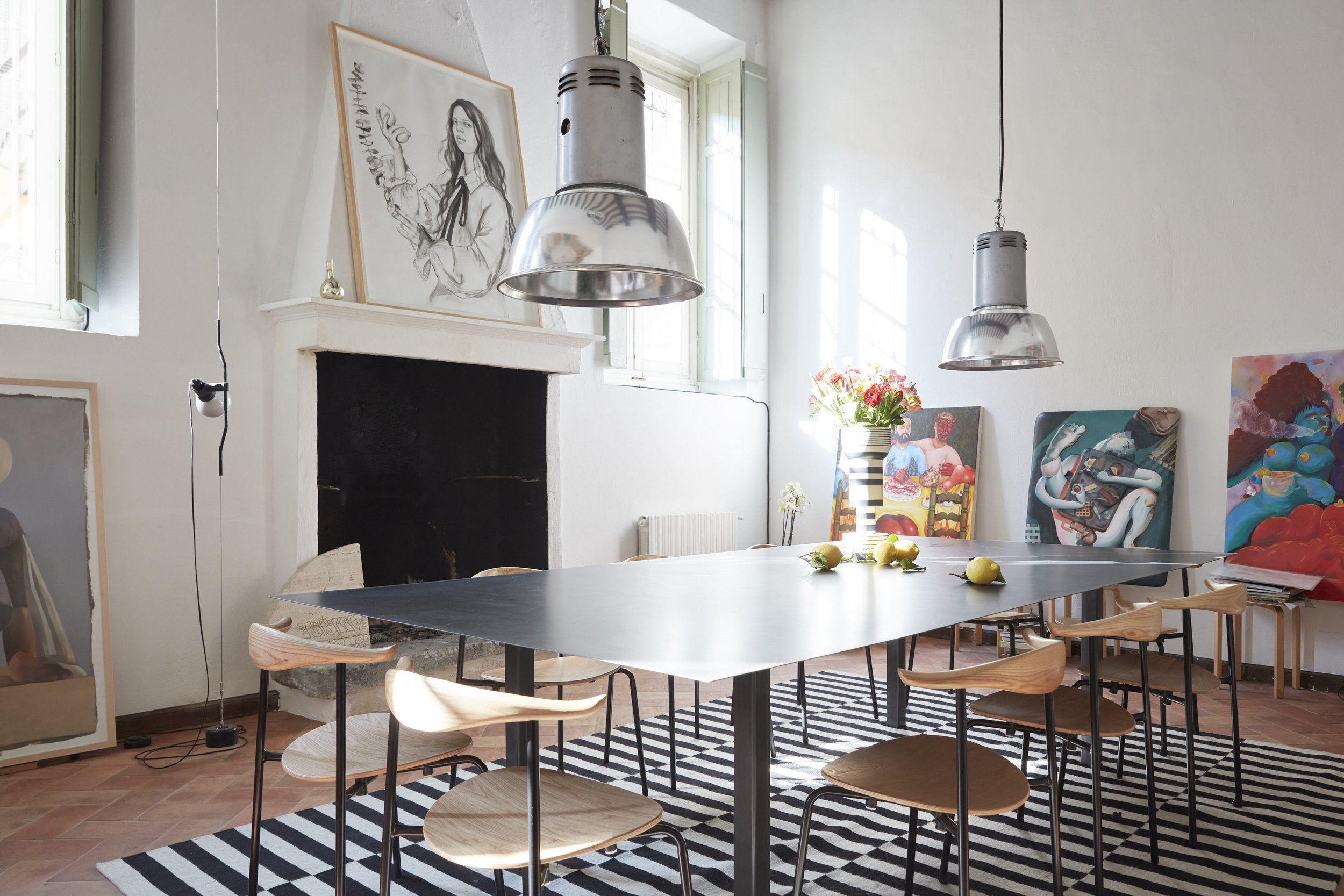




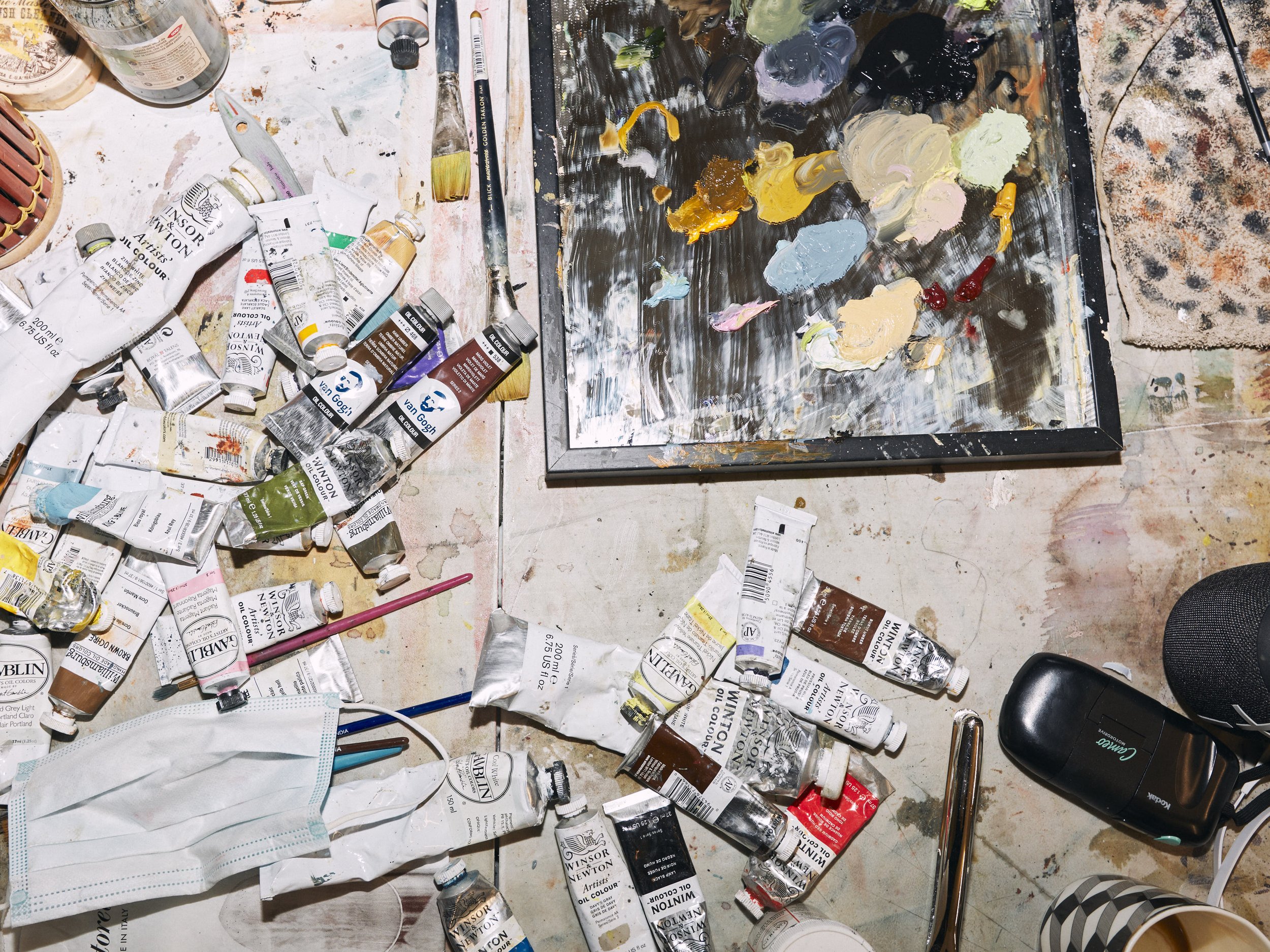

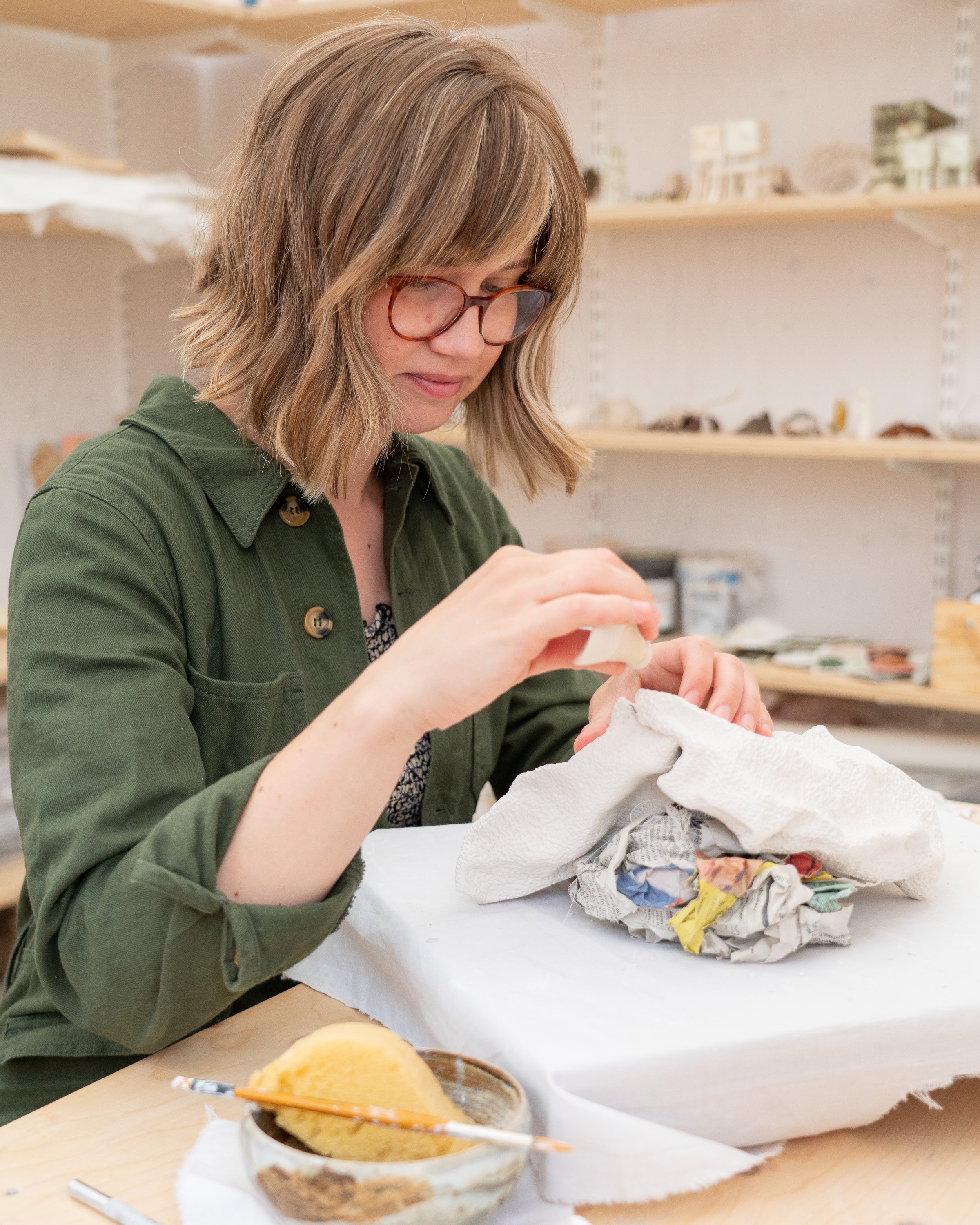

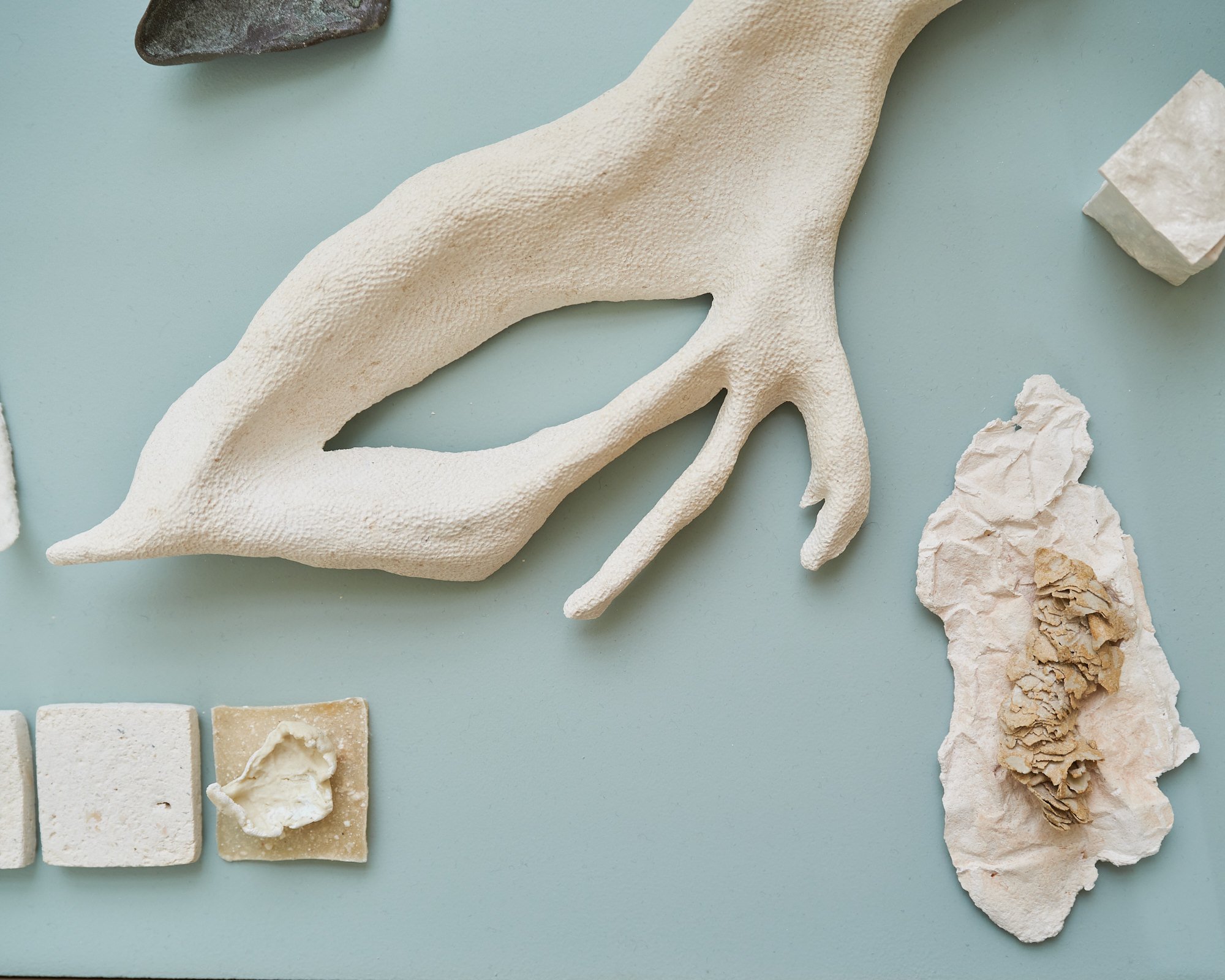











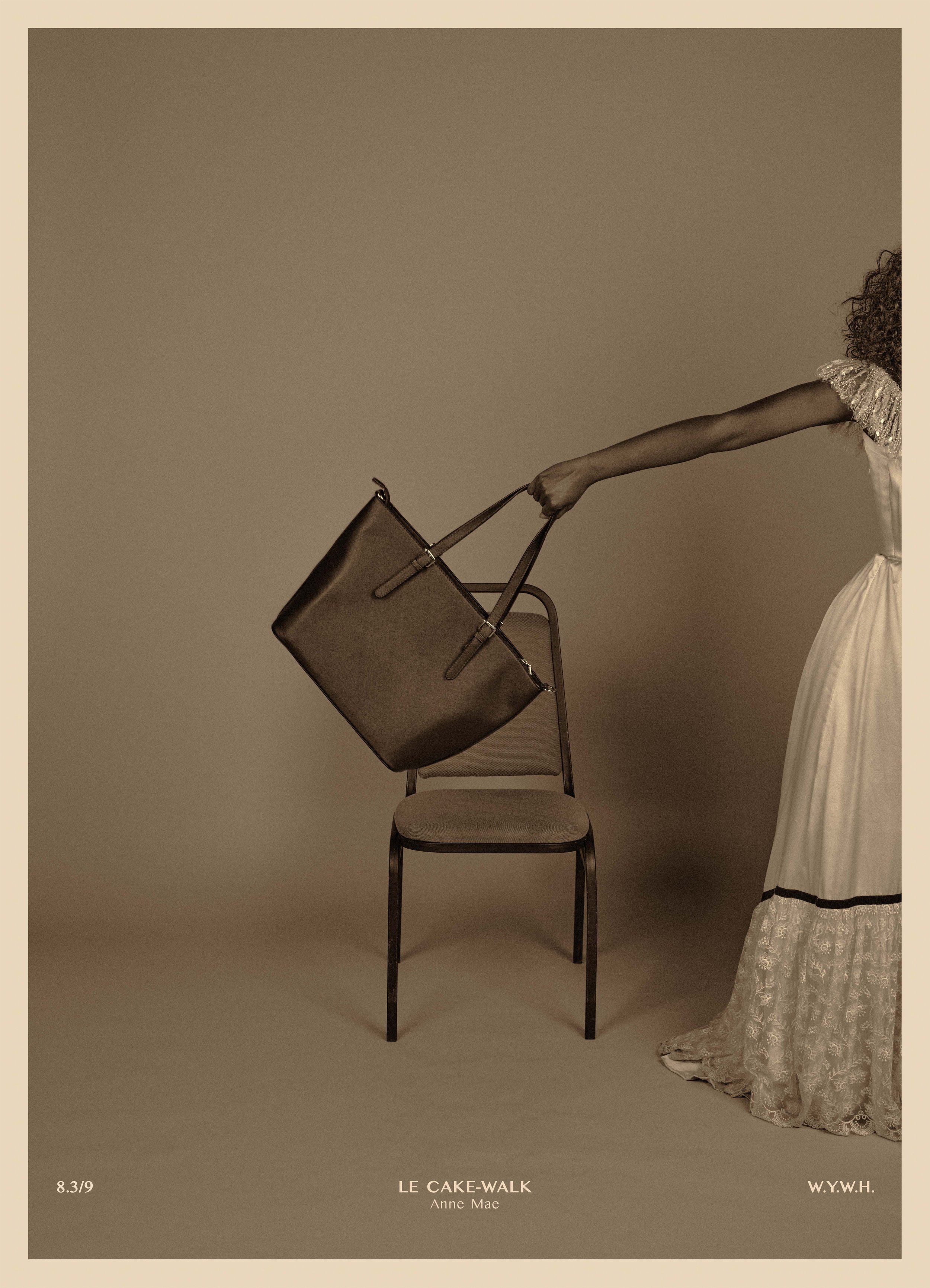


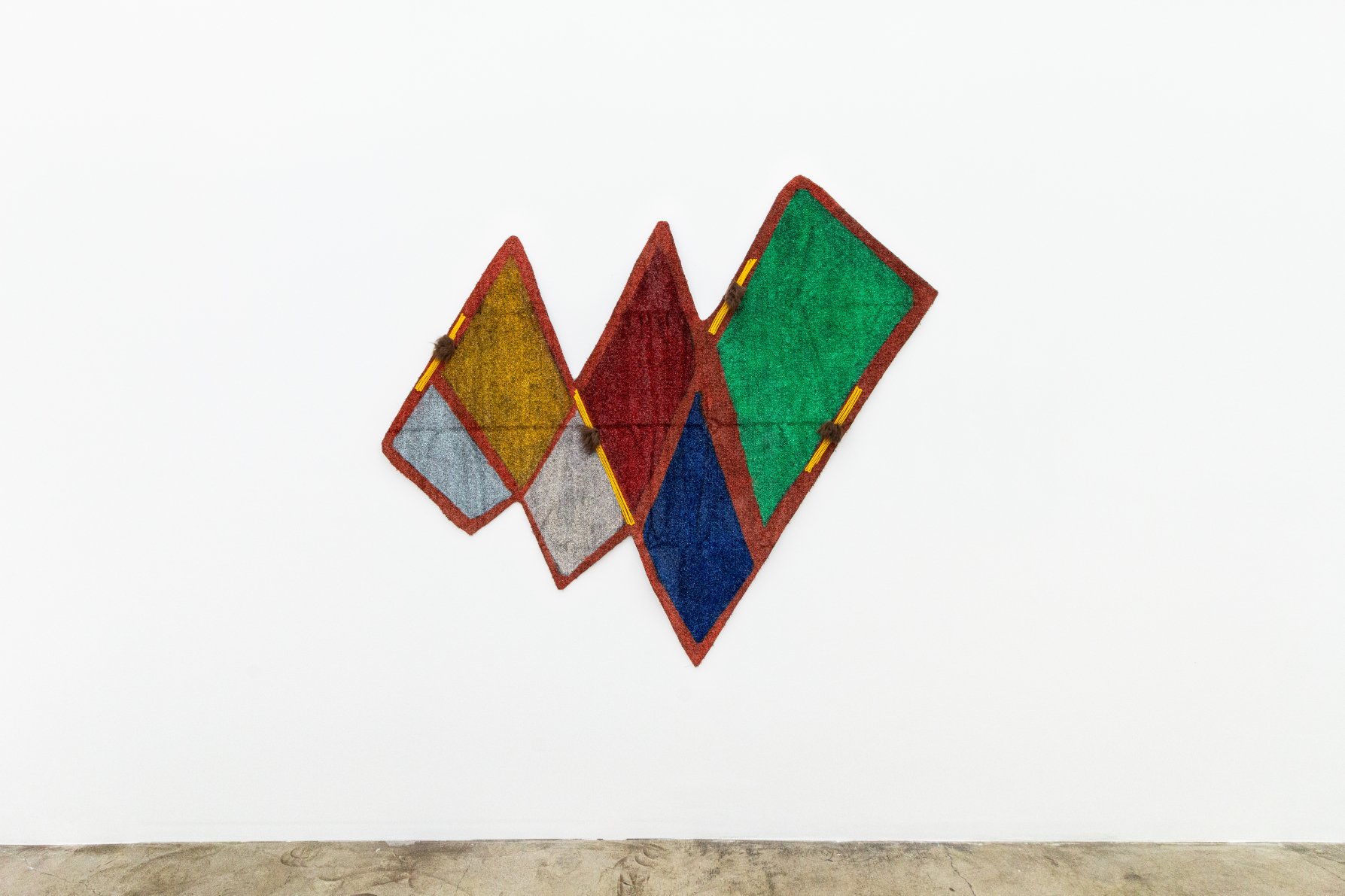
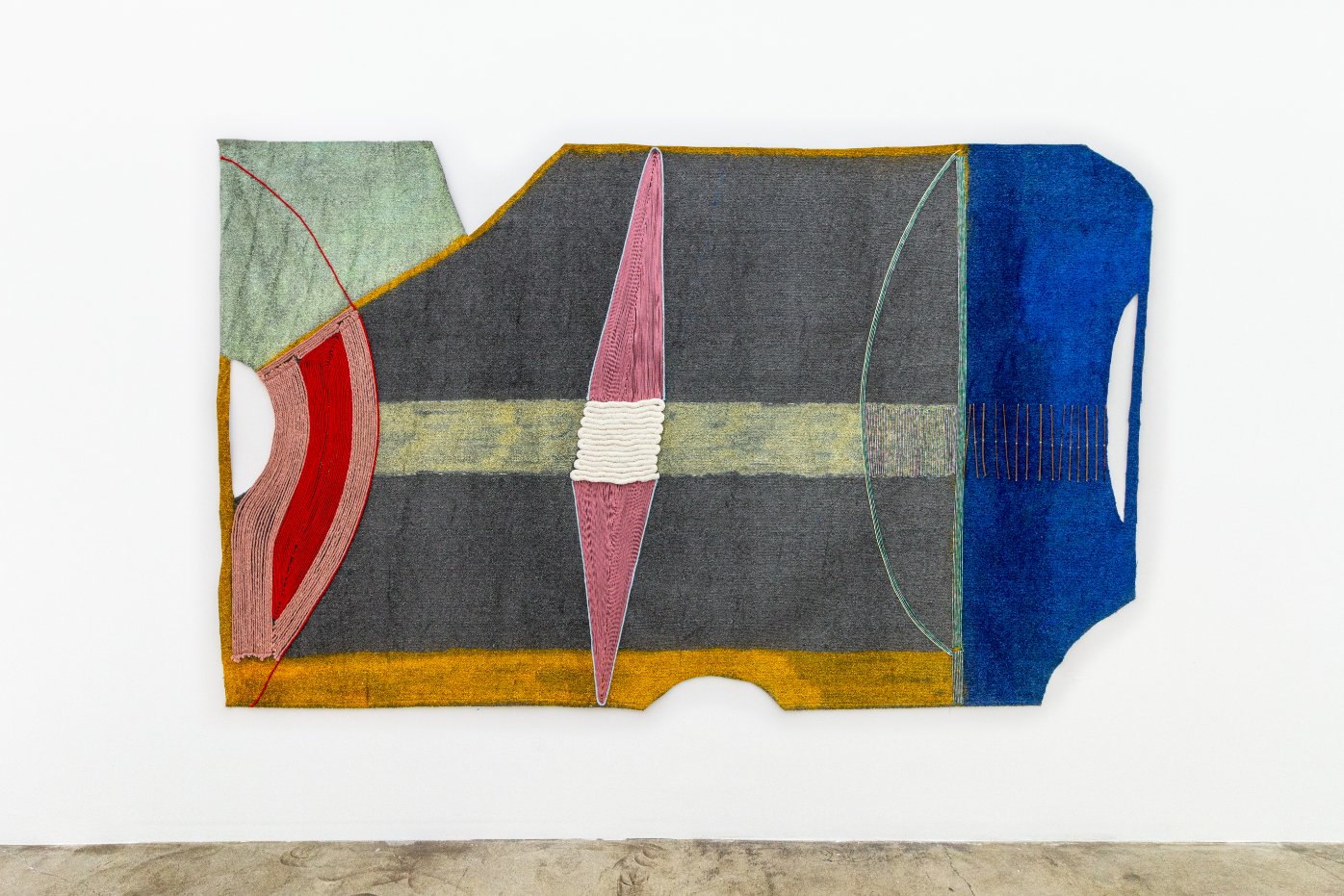
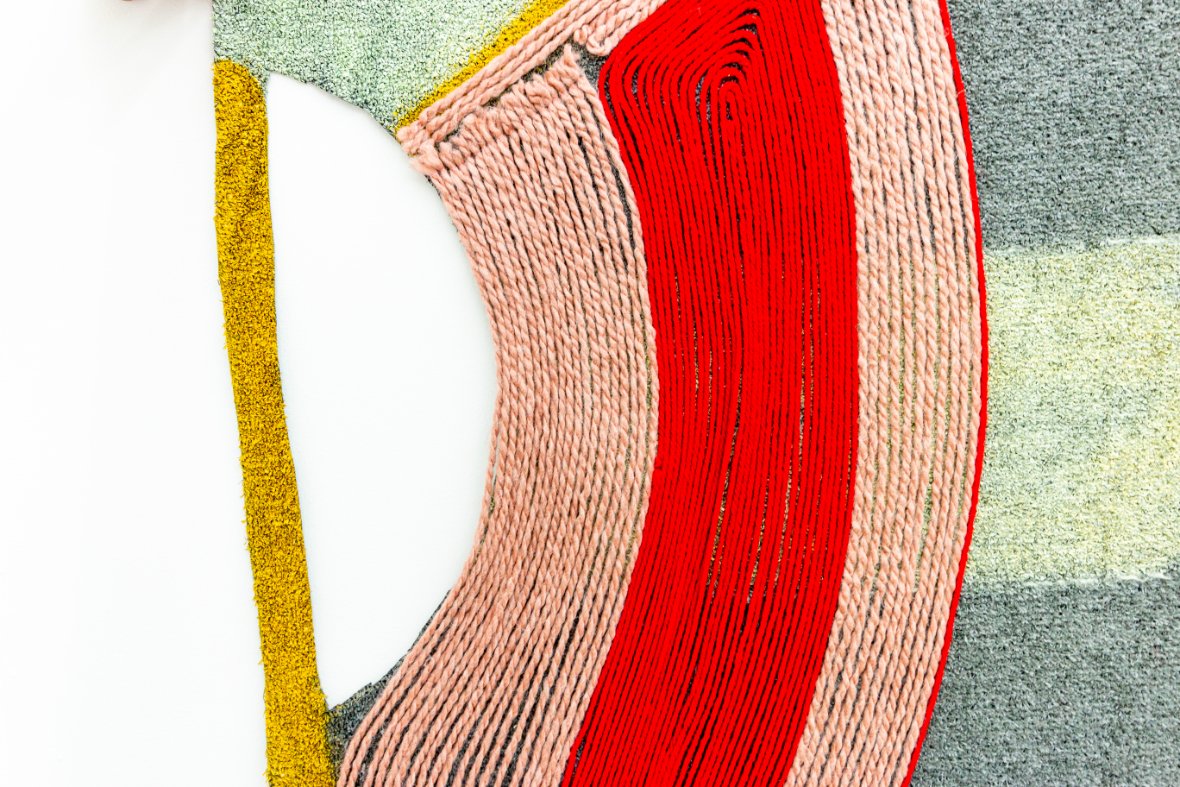
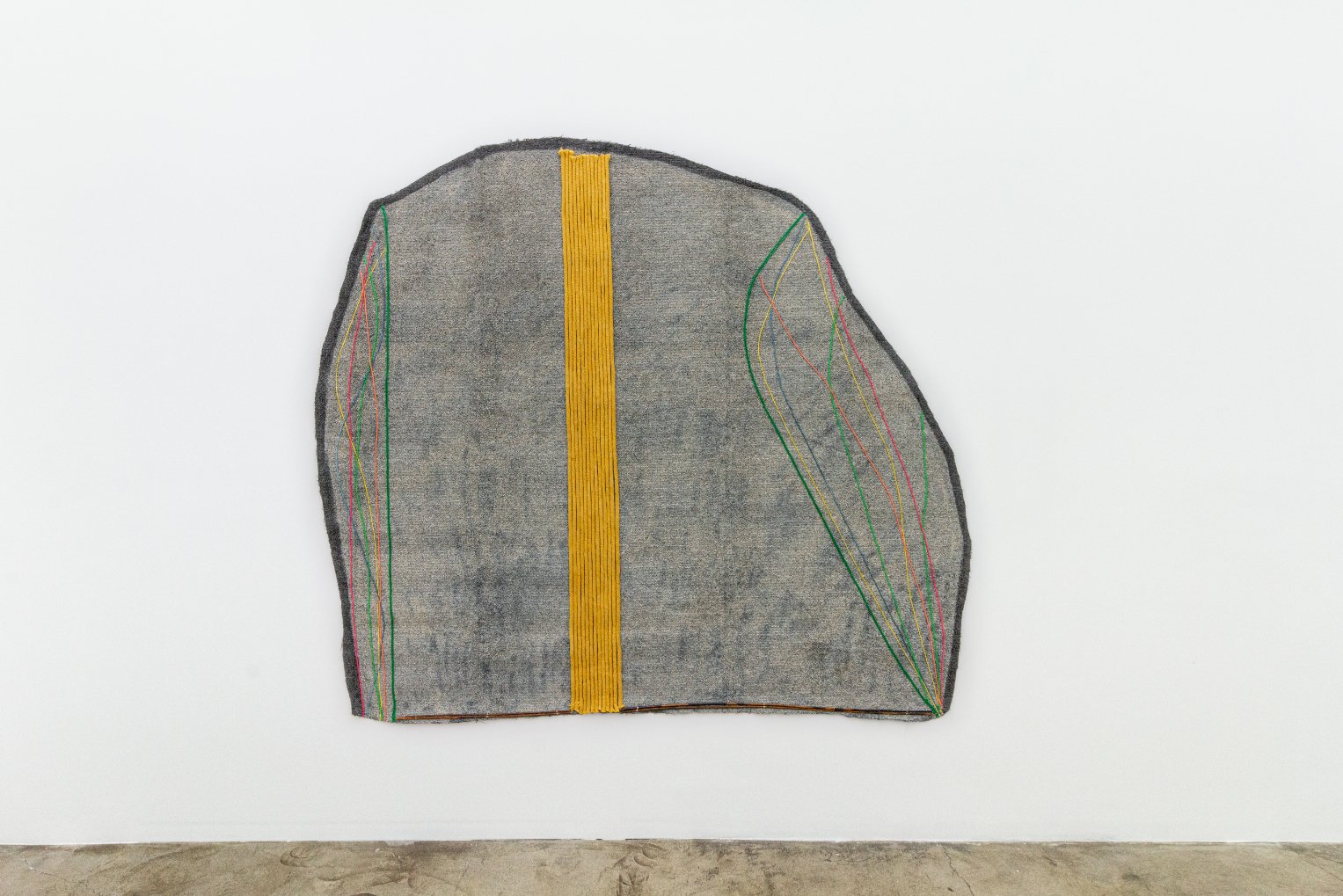
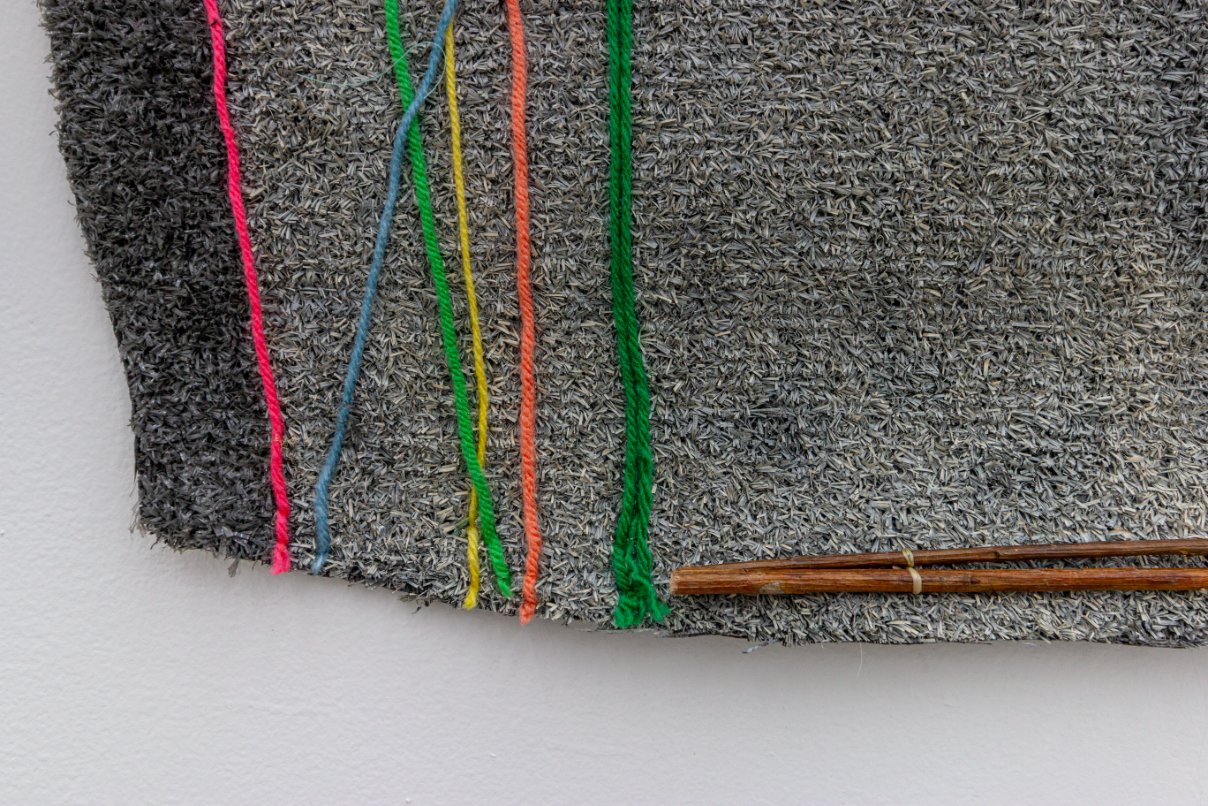
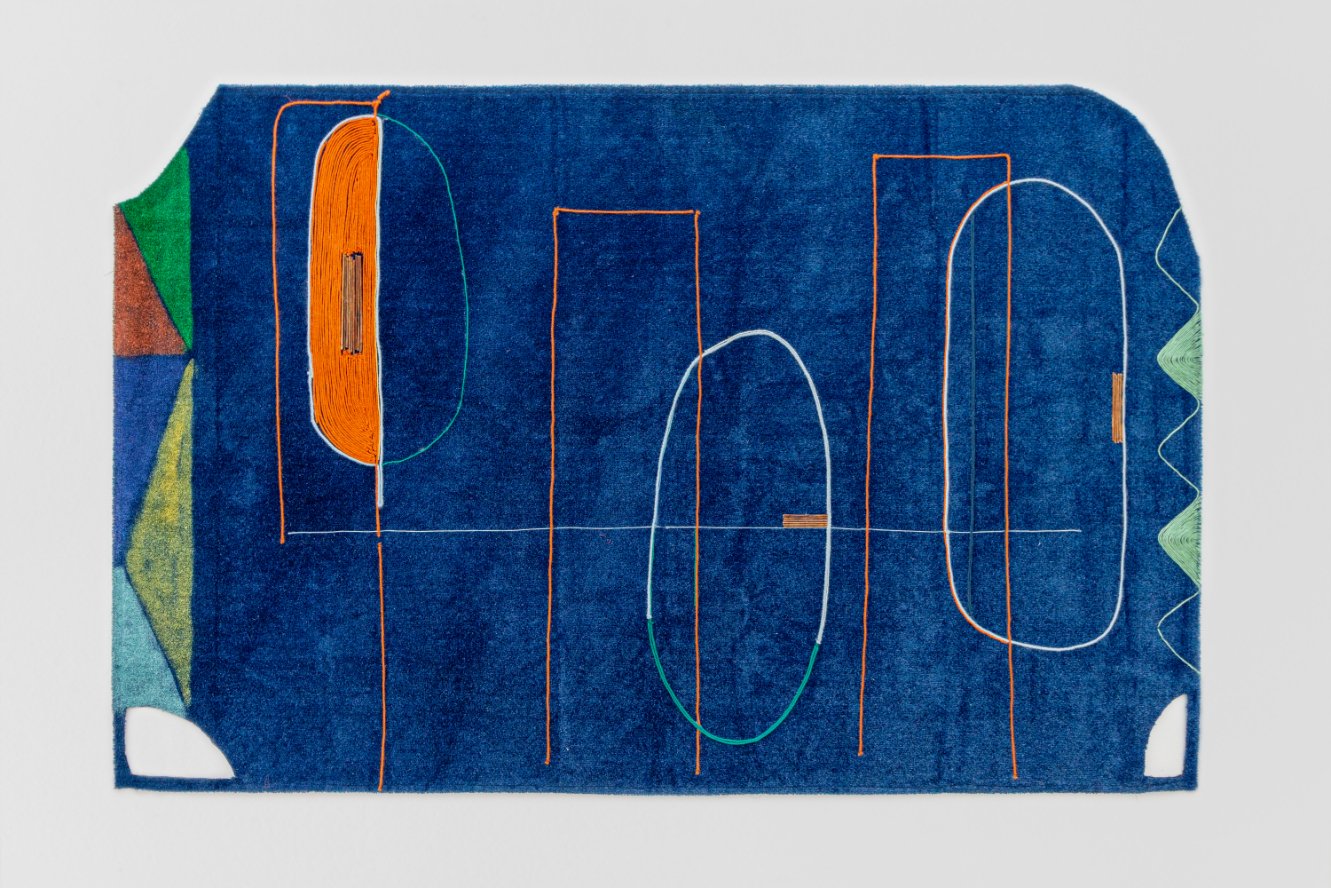
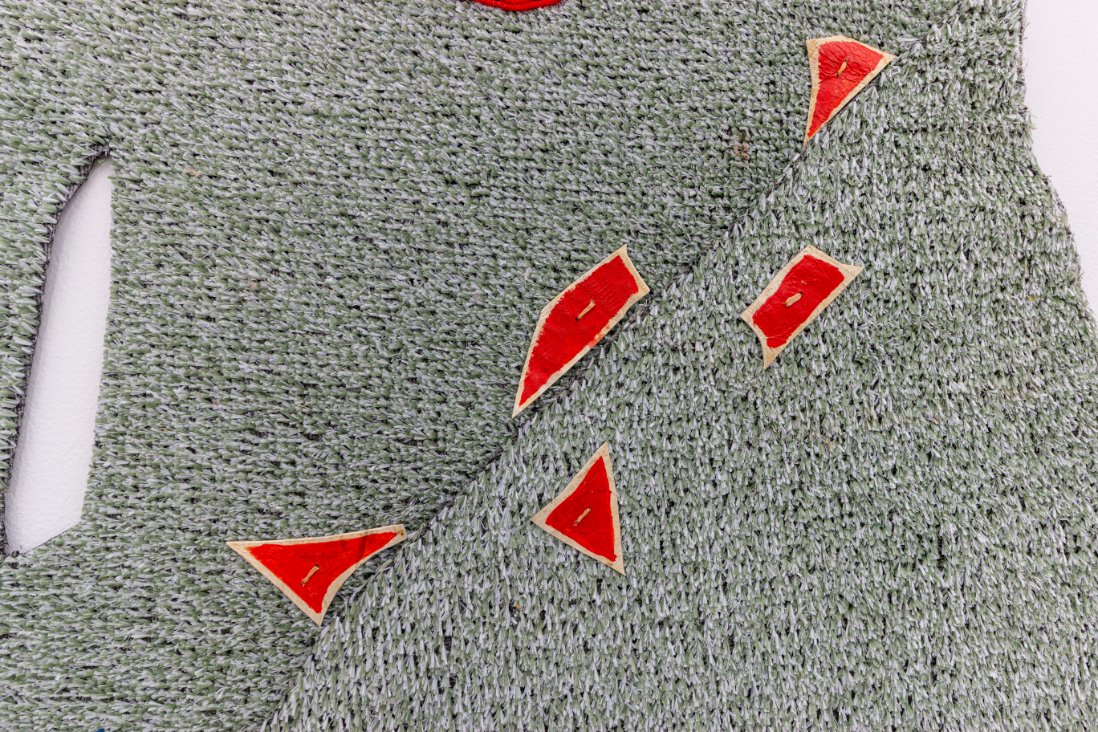
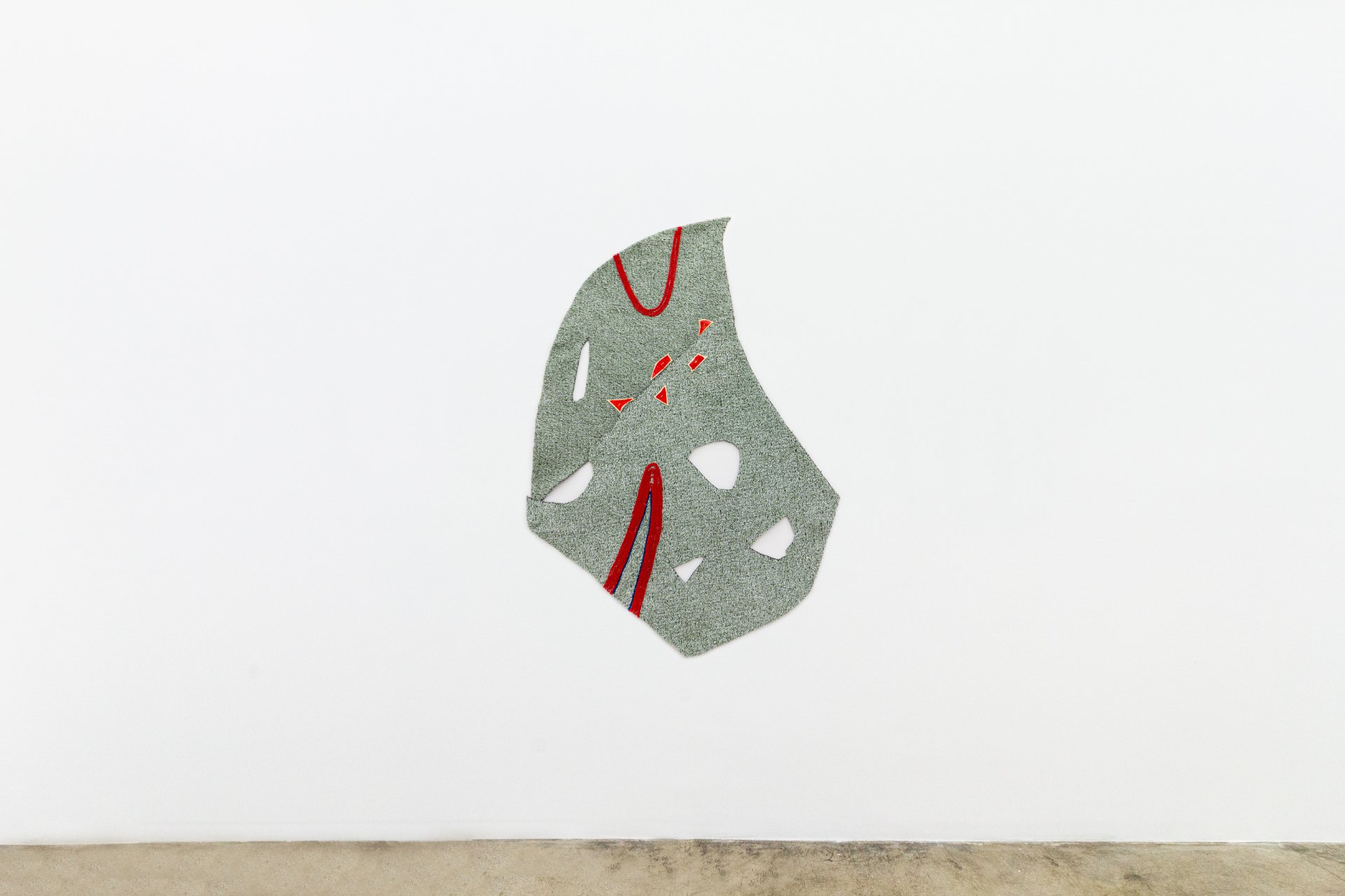
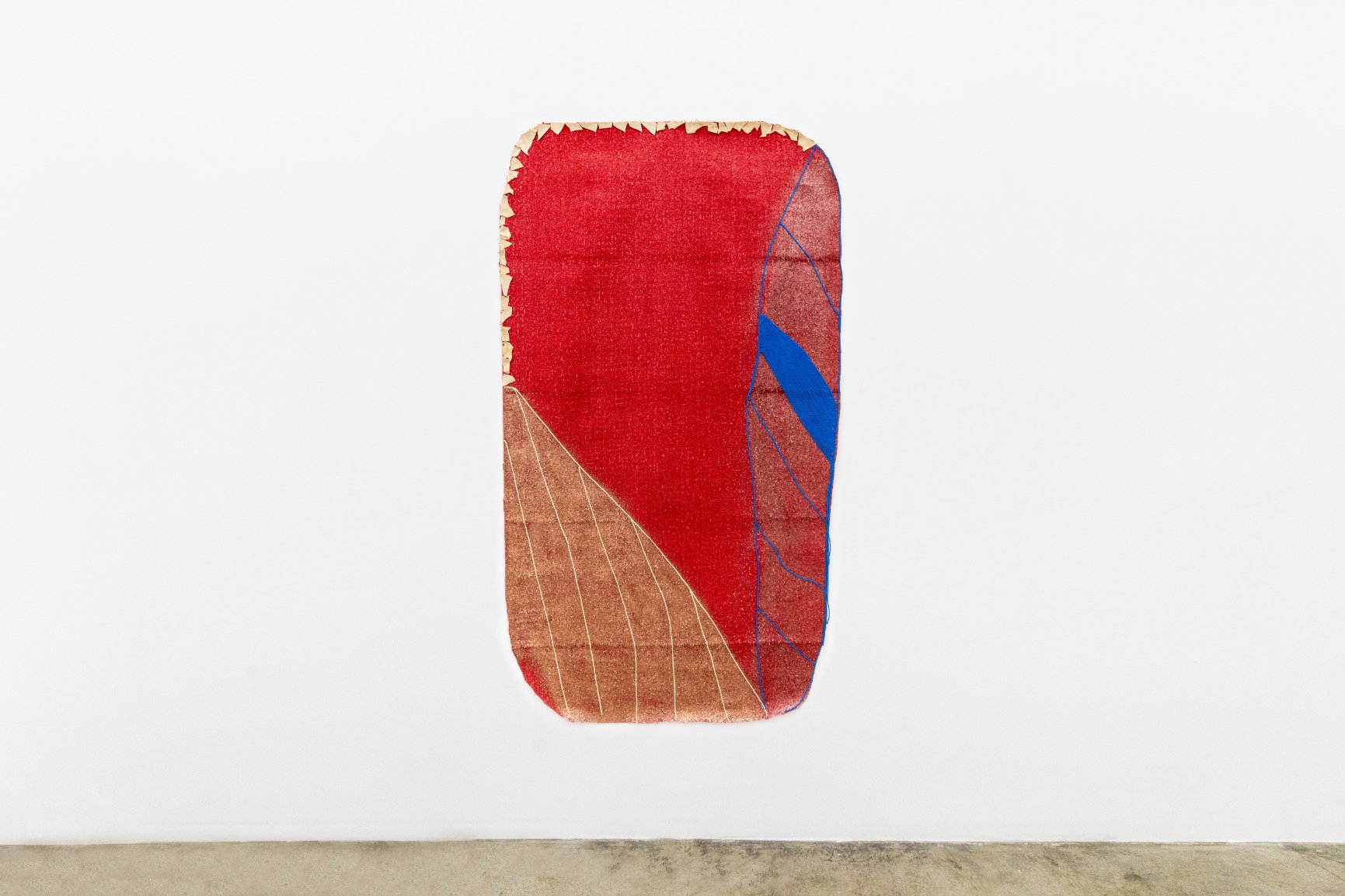

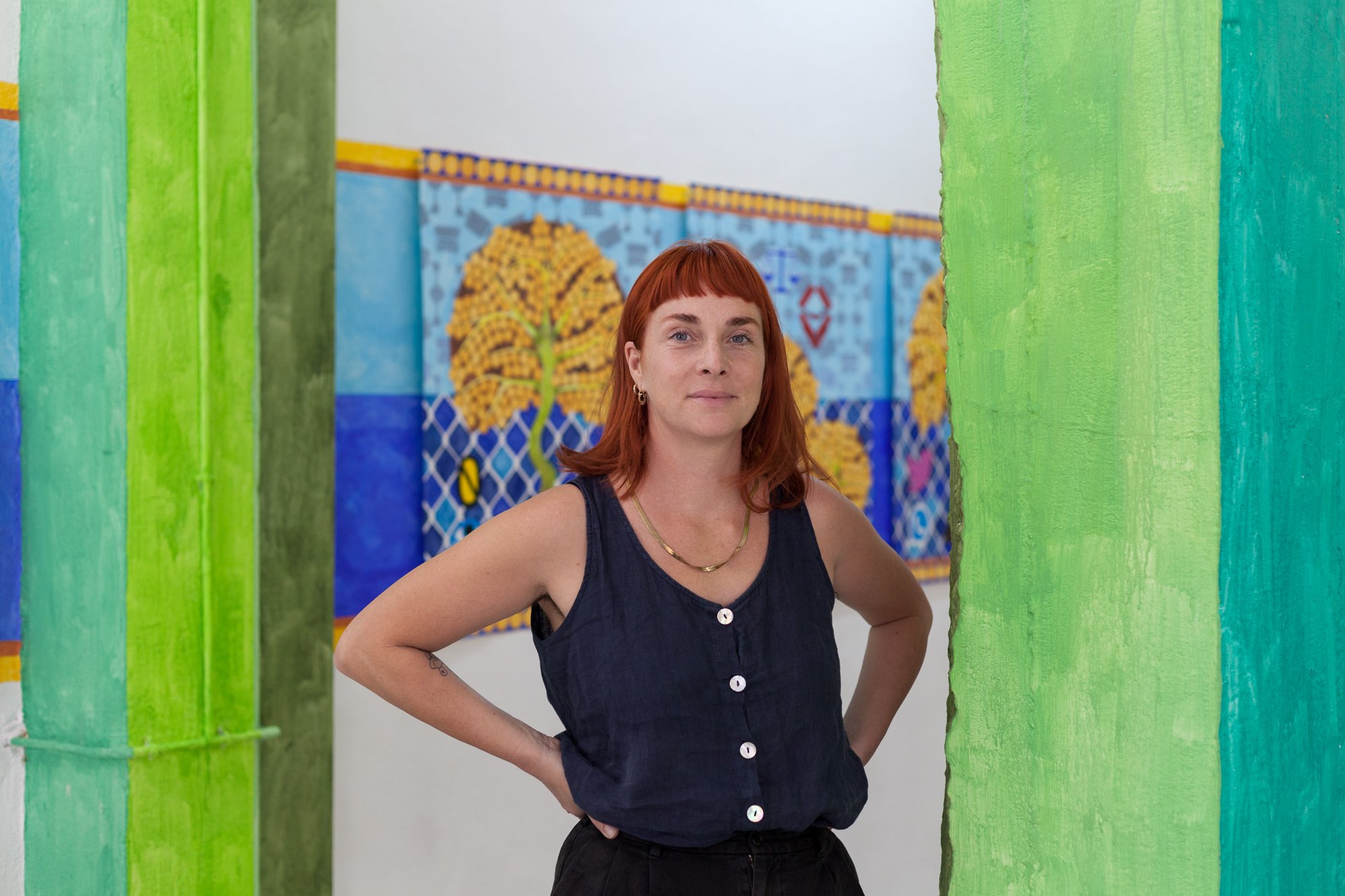
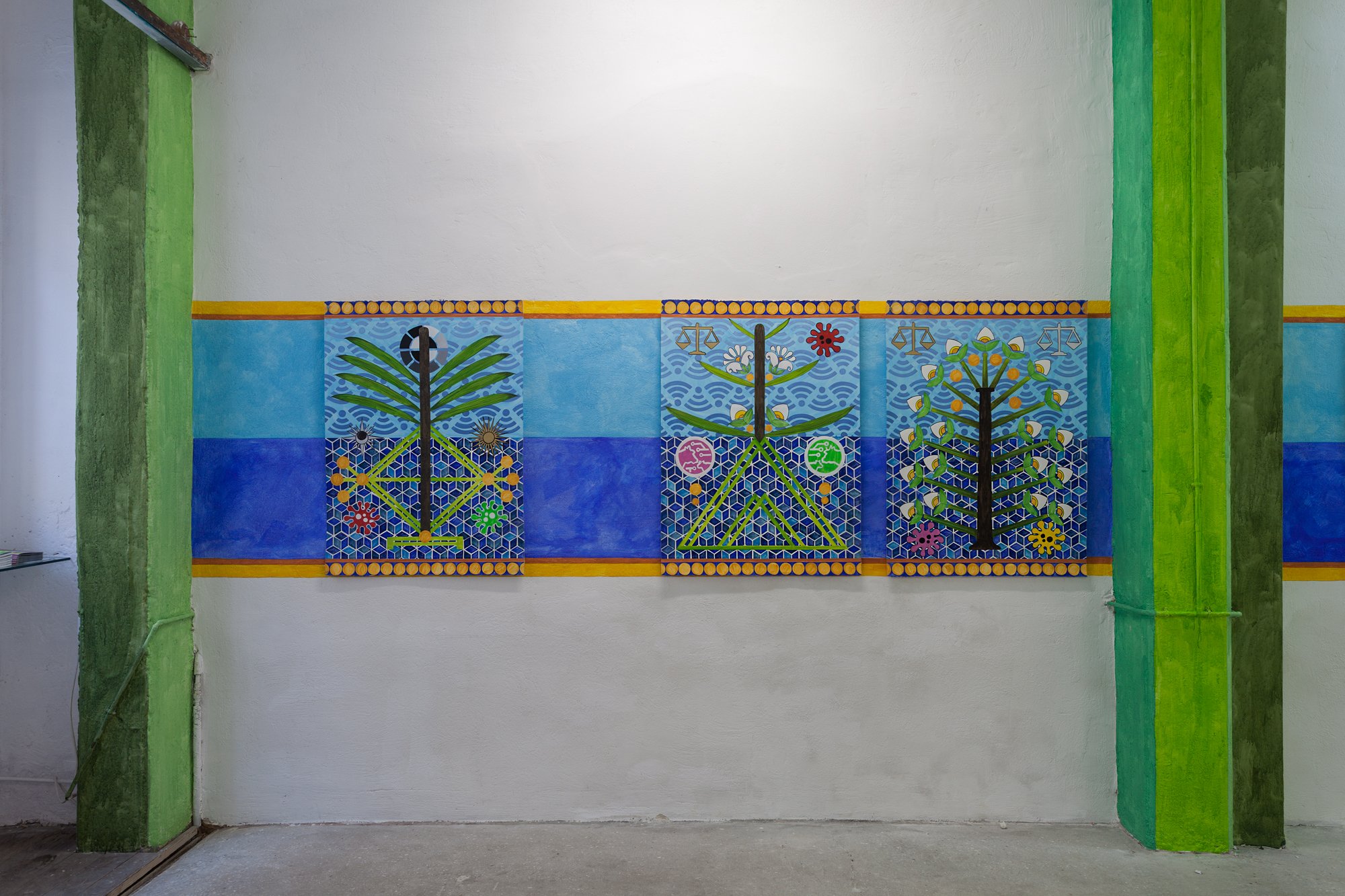



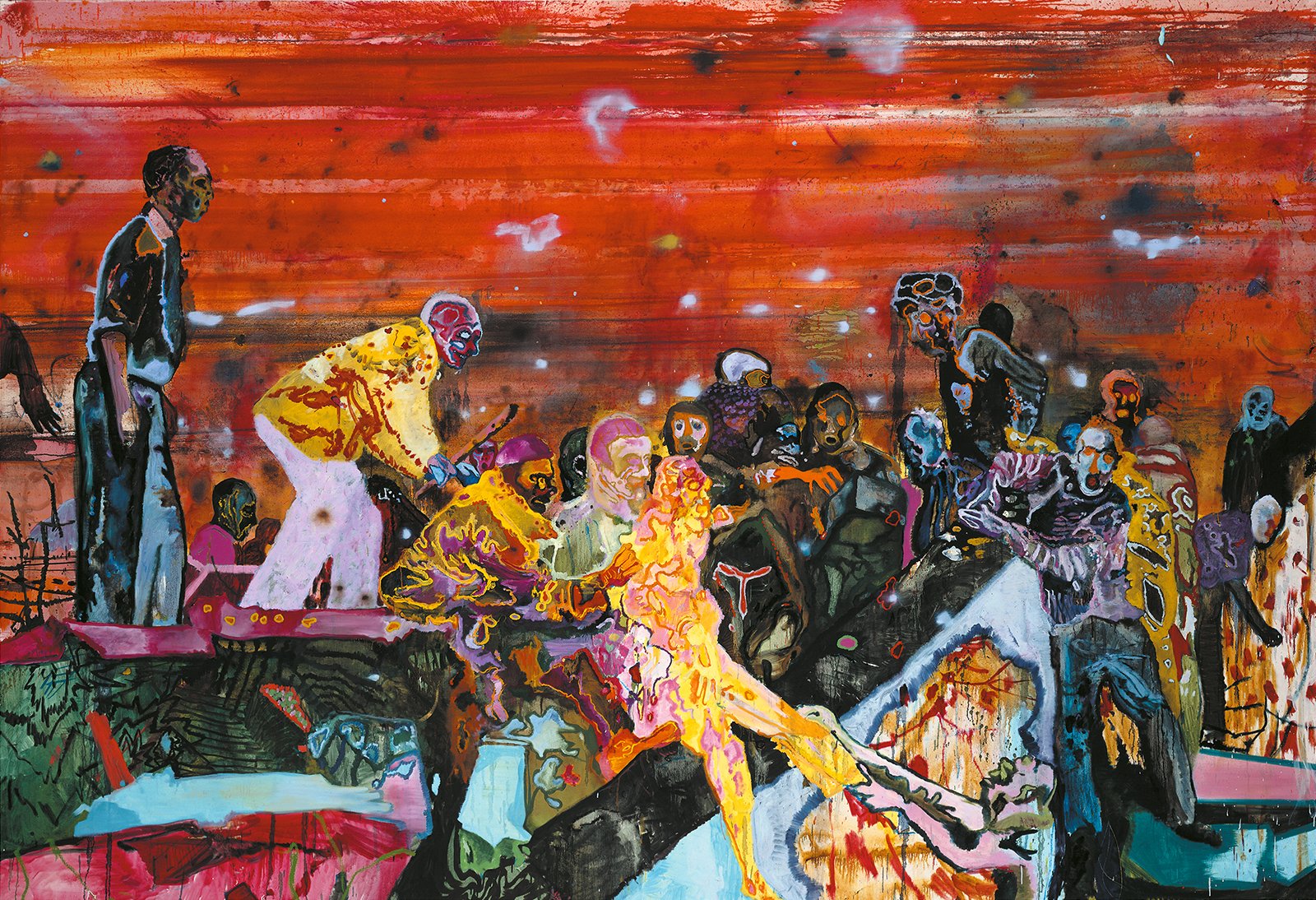

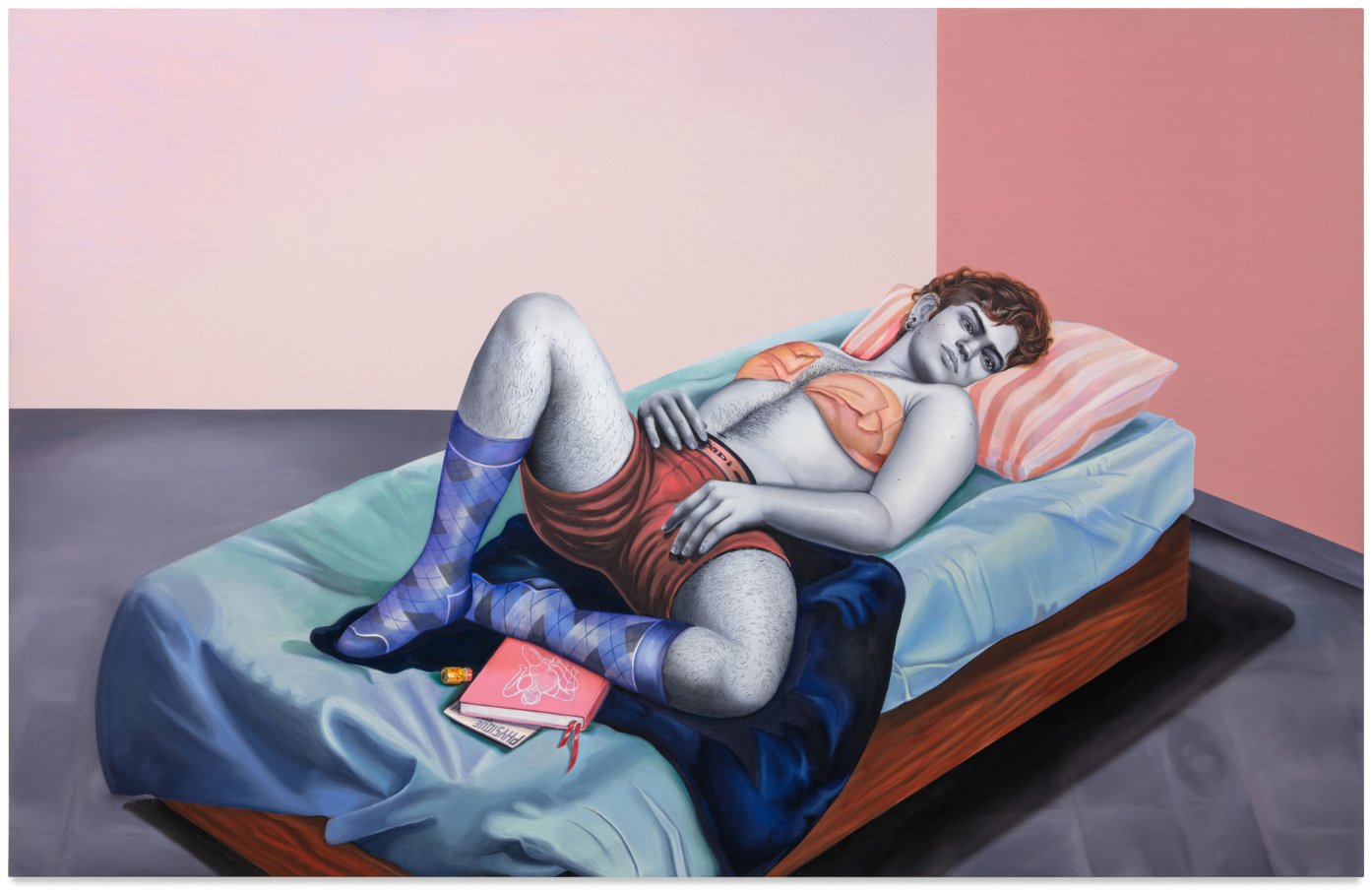
![Alannah Farrell [detail of] X (Pearl Street) 2022 Oil, acrylic, and latex on canvas 78h x 50w in](https://images.squarespace-cdn.com/content/v1/544cb720e4b0f3ba72ee8a78/1664929363203-TJY0DI2ELRJ30BSG7XWM/AFAR011+-+Alannah+Farrell+-+X+%28Pearl+Street%29+04.jpg)
